Creating the potential for better health in Africa





are a unique, forward thinking
affect health
specialist
Our experts connect thinking between health and infrastructure – offering a broad range of skills and expertise to support clients design, plan, implement and evaluate their healthcare services. In all our work, we take a digital first approach.

have permanent offices across the GCC, including Saudi Arabia, United Arab Emirates, Qatar, Bahrain and Oman.
services and expertise

Welcome to the Africa Health edition of Healthcare World. We are delighted to return to South Africa as Africa Health makes a welcome reappearance a er the pandemic.
COVID-19 has been just of one of the issues facing the continent in the past few years. While it has made headline news around the world, we mustn’t forget that Africa has its own unique set of healthcare challenges, which have been downgraded out of necessity with the global issues.
Now it’s time to address them anew, and where better to do it than Africa Health? There is always good news coming out of Africa and we are looking forward to seeing the innovations that talented scientists and clinicians have devised. As Cynthia Makarutse, Event Organiser at Informa Markets recognises on pages 16 and 17, despite bearing 25 per cent of the global disease burden, Africa is served by only 2 per cent of the world’s healthcare professionals.
This is where collaboration and partnership come in. Just because you have a clever idea doesn’t mean it will be snapped up. The key is to see how it fits into the wider vision, and sometimes it may need some joinedup thinking – literally. Strategic smaller businesses are understanding that they can o er more together than they can alone, particularly if their solutions complement and enhance each other.
Healthcare World can also help. We are the world’s leading magazine for the business of healthcare, but we are also uniquely placed to assist our clients and colleagues form new alliances, such as the partnership between Health Care First and Nexus Digital Technology which you can read about on pages 24 and 25.
We also help our customers and friends enter new territories, supporting them with everything from content and marketing through to market scoping, product development and cultural fit.
At Africa Health we are supporting our clients and colleagues to understand the Africa market, making
valuable introductions for them and helping them to grow their businesses. We are taking a trade mission to Johannesburg to gain a deeper understanding of the opportunities on o er and where their products, services or expertise fits in.
You’ll find many of them within these pages. From global engineering and consulting firms such as Mott MacDonald, Currie & Brown and Eltizam Colliers, to architects IBI and SME’s including data companies such as Methods Analytics, AdviseInc and VUIT. There are also digital companies with solutions such as cloud-based patient records from PatientSource, hospital digital platforms from Infinity Health, Radar Healthcare’s all-inone incident, risk and compliance so ware for patient safety, and Huma’s remote patient monitoring system.
That’s not forgetting the consultants such as Linea or the lawyers Bevan Brittan, along with Lyniate the global leader in healthcare interoperability and SNOMED, the systemised nomenclature for medical terms. Compliance and regulatory specialists Advanced Clinical Solutions, and medical image and clinical communications company Feedback Medical are also within these pages.


At Healthcare World we partner with the UK’s Department for International Trade, Health Education England and Sweden’s Skånecare, the international gateway to the skills, services, and expertise o ered by the public healthcare and dental care system of Region Skåne in Sweden’s southern province. The best of the UK’s National Health Service or NHS is represented by Imperial Private Healthcare, part of Imperial College Healthcare NHS Trust, that aims to partner with international hospitals to share learning and improve the quality of healthcare across the world.
So strength is in numbers, especially if everyone pulls together. Many of the challenges facing the healthcare sector globally can be faced confidently, knowing that solutions are out there. Success lies in finding the right partners who share the vision and supply the missing parts for the solution.
Sarah Cartledge Group Editor
 Ritu Chopra Operations Director
Ritu Chopra Operations Director

 Joe Everley Art Director
Fabian Sutch-Daggett Features Editor
Joe Everley Art Director
Fabian Sutch-Daggett Features Editor




Global Head of Healthcare
helen.pickering@curriebrown.com
Healthcare systems across the world need to ensure they work as an effective, integrated ecosystem that sets the health of every member of society at the forefront. We believe this can only be achieved when you put the patient first in all decisions made.
Whether that be planning infrastructure, integrating systems and processes, or securing finance for new facilities, using multidisciplinary expertise and understanding of what patients need will enable a world-class healthcare system to become a reality.
At Currie & Brown we have the knowledge, experience and data to not only identify the plan, but help it become a sustainable reality for everyone - the community, the doctors, nurses and wider workforce, but most importantly the patient.
Currie & Brown is one of the world’s leading physical assets management and construction consultancies, dedicated to advising clients in respect of the management and utilisation of their physical assets, and is differentiated by innovation, expertise and experience.
We bring knowledge and experience spanning the entire life cycle of healthcare, from the development of effective system-wide integrated models of care and determining viable infrastructure and digital plans, through to developing optimised PPP models and the cost and project management of infrastructure delivery itself.

With principal offices in London, Dubai, Hong Kong, Mumbai, New York and Shanghai, we operate throughout the Americas, Asia Pacific, Europe, India and the Middle East.
Currie & Brown has been a Dar Group company since 2012.

“A focus on the patient will enable the delivery of world-class integrated and sustainable healthcare systems and infrastructure.”
are using digital technology to look after large patient cohorts and improve treatment adherence, says Aida Yousefi, Chief Commercial Officer, New Growth Markets, Huma Therapeutics
health resilience in South Africa. Myles Ritchie, Better Health Programme South Africa Lead, Mott MacDonald
Infinity Health’s digital task management is reducing nonemergency bleeps for junior doctors on night shifts
Health 2022 – a return to
person business
Imperial Private Healthcare International Affiliate

Jyoti Mehan of Health Care First and Mona Hayat of Nexus Digital Technology speak to Healthcare World about an exciting new solution to help patients manage comorbidity better
Government-owned Skåne Care is the international gateway to the skills, services, and expertise offered by the Swedish public healthcare and dental care system
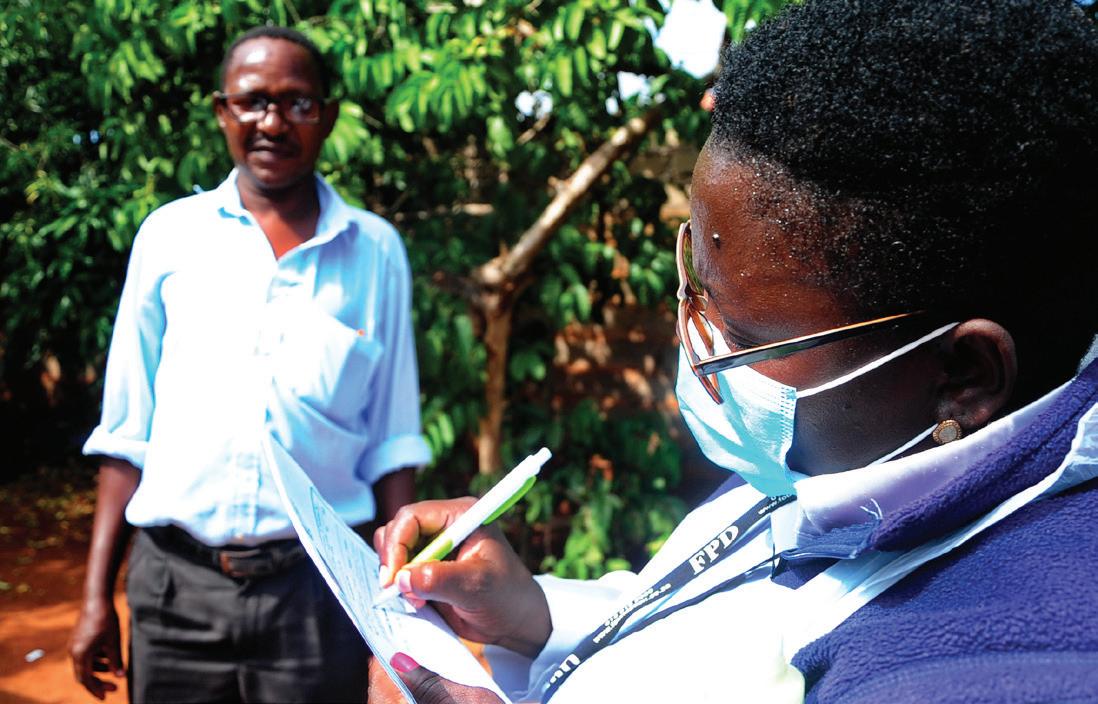

Simon Swift of Methods Analytics, and Simon Jones, Professor, Department of Population Health at NYU Langone Health, explain how to build an effective population health management approach using data modelling
The UK has a diverse array of NHS, private and wider life science organisations that are keen to share their experiences and expertise, says Rahul Agarwal, Deputy Head: Healthcare, Department for International Trade UK
36 With Bleepa and CareLocker, remote access to world-renowned specialist advice and clinical team working has never been easier, says Nick Mayhew, Chief Marketing and Sales Officer at Feedback plc
40 PPP can support delivery of KSA’s ambitious healthcare vision, say Helen Pickering Global Head of Healthcare and Mike Felton Senior Director at Currie & Brown
44 Vincent Buscemi, Partner and Head of Independent Health and Social Care at Bevan Brittan LLP, explains to HW Editor Sarah Cartledge how to plan for success
50 Paul Johnson of Radar Healthcare tells Healthcare World how their one-system solution can enable organisations to mitigate risk and achieve better patient outcomes
52 Adam Townsend, COO and cofounder of VUIT speaks to Healthcare World about making large datasets comprehensible and useable
56 The UK’s first cloud-based electronic patient record can mitigate needless patient harm, say Dr Michael Brooks and Dr Philip Ashworth of PatientSource


58 Josie Winter, Clinical Operations Director of Advanced Clinical Solutions, speaks to Healthcare World about developing clinical excellence in hospitals
61 Dr Patrick Wynn of Health Care First explains why the role of the GP is more vital than ever

64 Karen Flatt, Mental Health Lead for IBI Group, on the intricacies of designing and delivering effective and safe buildings for mental health care provision
Operating in Saudi Arabia – a different perspective. Ian Chambers, CEO Linea
Three essential components for health data interoperability. Drew Ivan, Chief Strategy Officer, Lyniate
Financing investment in Saudi Arabia. Mansoor Ahmed, Executive Director MENA and Imad Damrah, Managing Director KSA, Colliers
77 The NHS Consortium for Global Health is a single point of access to expertise from the UK National Health Service, says Kevin Miles, Senior Lead, NHSC at Health Education England
Fixing procurement pricing. Mat Oram CEO and Co-founder of AdviseInc on finding better value through hospital procurement processes
SNOMED CT’s multilingual healthcare terminology
Opinionated – HW’s CEO Steve Gardner on Integrated, Accountable, Value and Outcome-Based Care
We are Linea. We understand Healthcare.




From the doctor’s clinic to the operating theatre and at every point throughout the patient pathway, we help healthcare clients to deliver more effective, efficient, and affordable care through change management and business transformation.


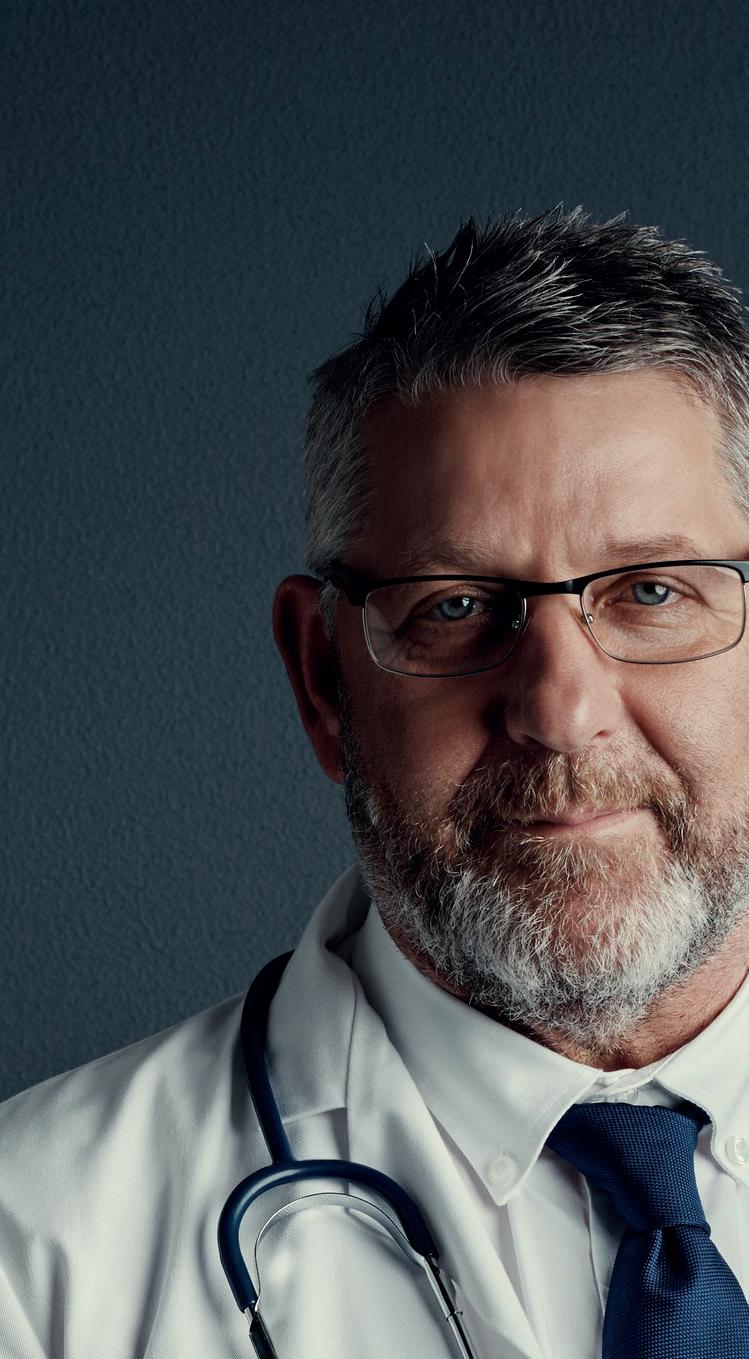


Clinicians are using digital technology to look after large patient cohorts and improve treatment adherence, says Aida Yousefi, Chief Commercial Officer New Growth Markets, Huma Therapeutics
Huma Therapeutics is a digital health company that makes it possible for hospitals, doctors and researchers to collect health data through people’s smartphonesknown as remote patient monitoring. It’s changing the way we do healthcare and research.
Our award-winning platforms are used by more than 3,000 hospitals and clinics, with 1.8m active users. We cover a whole range of different diseases including cardiac failure, diabetes, musculoskeletal surgery and respiratory issues like COVID-19
and asthma. Using our technology, clinicians have almost doubled clinical capacity, reduced readmissions by over a third, and seen improved treatment adherence.
As well as helping hospitals and doctors to care for people at home, and running digital or hybrid research (known as Decentralized Clinical Trials), our platform is regulated ‘Software as a Medical Device’ and so is used as a bespoke system for pharma and medtech companies as a companion app.
The app can capture patient-generated data such as heart rate, blood pressure and activity tracking directly through the phone’s camera and accelerometers. It can also be used to give information about symptoms and answer clinically-approved questionnaires, and connect to your other medical devices.
Clinicians can use the system to monitor groups of patients at once. It helps flag any potentially deteriorating patients so that the clinician can spot who may need their attention. In addition, the system can point patients to appropriate educational content and provide reminders about their treatment plan.

We’re mainly known in the Middle East for two large partnerships with Mediclinic and Tamer. We announced Mediclinic at Home
with Mediclinic Middle East in March 2022 - it’s a chronic disease management programme that brings together the best of virtual and physical healthcare. The system uses the patient’s mobile phone, wearable devices and other sensors to provide Mediclinic doctors with a stream of data on their health. The data enables healthcare teams to monitor patients with conditions such as diabetes or hypertension, observe their evolving symptoms, advise on the care required, and inform them when a visit from a clinician or hospital admission is needed.
In May of this year we announced a 5-year deal with Tamer, the Middle-East’s leading healthcare distribution company, to power ‘hospitals at home’ with remote patient monitoring for the 34m people living in the Kingdom of Saudi Arabia. We’re beginning by supporting patients
with diabetes and cardiovascular disease (CVD), which are the biggest causes of premature death in the Kingdom. CVD is linked to 37 per cent of deaths, whilst diabetes affects at least 13 per cent of people in Saudi Arabia, and another 5 per cent may be undiagnosed. Patients
will now be able to use Huma’s system to give clinicians real-world insight into their health.

The Saudi healthcare transformation is one of the largest in the world - it’s ambitious, bold, fits with Saudi’s outlook and will inevitably make the most of digital health. Saudi’s transformation programme has taken some of the ‘best of the best’ ideas from around the world and is being developed from the ground up, creating access for all and maximising outcomes and experience for people and patients. This transformation needs partners who can move at speed and scale, addressing the pain points in their health systems, which we have demonstrated through our national contracts and through our work during the pandemic.
Huma can help Saudi bridge both

“Using our technology, clinicians have almost doubled clinical capacity, reduced readmissions by over a third, and seen improved treatment adherence”
Aida Yousefi Chief Commercial Officer New Growth Markets Huma
care and research. Our partnership with Tamer, the largest distributor of drugs, devices and services to the public and private hospitals and clinics, allows our system to be quickly and easily added into Saudi’s health systems. We aim to provide Hospital at Home solutions and kick o the transformation of care to
all in the Kingdom of Saudi Arabia, as it evolves fully into digital-first care.






At Huma we have always believed in demonstrating our evidence and doing things the right way. As well as having a

























platform that is regulated as ‘So ware As a Medical Device’, we have published more than 30 peer-reviewed papers and been the subject of independent reports, such as from the UK’s NHS. These show 3-4x reduced mortality among COVID patients in Germany and 40 per cent shorter stays in hospital. The data also show how it took 75 per cent less time to get community cardiac patients onto their optimal medication - dropping from 3 to 4 months to 28 days - and how our platform can detect deteriorating patients waiting for cardiac surgery with almost 90 per cent specificity, helping clinicians know who to prioritise.






Our system is already used in the Middle East and across England, Wales, Germany and now in the US. We are disease-agnostic and we span healthcare and research so that the same hospital can have patients with one disease, who are moved into a trial and back, and then looked a er for a related illness – all done through one platform. You just choose which modules you want to switch on and switch o . In addition, as a regulated technology, and with evidence showing the positive impact we can have, we have shown that we can be trusted, that we can move quickly and that we can operate at scale.


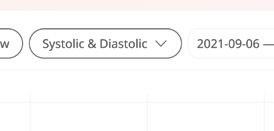













You wouldn’t spend 10 times more than you had to on something simple… Would you?

B ecause this is happ ening in our hospi tals, ever y day. AdviseInc bring transp arenc y and clari t y to sp end in the he al thcare s ys tem.
Using the la tes t to ols we give ever y hospital the abilit y to understand pricing and control once hidden cos ts. AdviseInc, make sense.
As the rise of diseases related to unhealthy lifestyles places a growing burden on South Africa’s health system, Mott MacDonald’s Myles Ritchie explains how a coordinated programme of disease prevention and treatment can make a difference

Blue uniformed community health workers (CHWs) are at the frontline in South Africa’s battle against noncommunicable diseases (NCDs), which accounted for 51 per cent of total deaths in South Africa in 2019, according to the World Health Organization. Primarily, this includes cardiovascular diseases, cancers, chronic respiratory diseases and diabetes.
CHWs, who provide basic screening and health support to people in their homes, are well placed to raise awareness about the dangers of NCDs, which are linked to factors such as diet, exercise, smoking, alcohol and air quality.
Early screening and diagnosis as well as the promotion of healthy lifestyles will need to be stepped up massively to gain control over these diseases and alleviate pressure on the health system. This has become a major priority for the government of South Africa.
• The strain on the health system over the past two years has strengthened the case for action to improve the prevention and treatment of noncommunicable diseases (NCDs) through grassroots action, targeted health policies and better data surveillance.
• Mott MacDonald are supporting a government pilot on NCD surveillance in the Western Cape. The aim is to understand the prevalence of NCDs from alternative data sources.
• The South African government is committed to tackling the NCD threat from multiple angles — innovative use of data and strengthening community healthcare will both be part of the long-term solution.
Until now, the threat posed by NCDs has been overshadowed by South Africa’s focus on HIV, tuberculosis (TB) and maternal and child health, which have been the main contributors to mortality rates. However, increasing successes, specifically controlling HIV through lifelong treatment, means that more people are living longer and suffering from age-related NCDs.

During COVID-19, people with NCDs were also found to suffer more severe health outcomes from the virus. Late diagnosis of diabetes in South Africa, which has resulted in increased levels of heart disease, was an additional risk factor for COVID-19.
The strain on the health system over the past two years has strengthened the case for action to improve the prevention and treatment of NCDs through grassroots action, targeted health policies and better data surveillance.
The UK government-funded Better Health Programme, South Africa, or BHPSA, is a three-year programme of technical assistance to strengthen the health system by supporting South Africa’s national NCD plans. Managed by Mott MacDonald, the programme has helped to create tailored clinical guidelines and training on NCDs,
which will be used by the country’s cadre of CHWs. The NCD training module will be integrated into the national curriculum for CHWs and become standard practice in their duties.
South Africa Lead Mott MacDonald
CHWs have traditionally focused on providing support on HIV and TB as well as maternal and child health services in the community. Now, with tailored training provided through BHPSA, they can integrate screening for high blood pressure and sugar, make referrals for care and educate people about how to prevent or manage these conditions.
The lack of NCD data in South Africa is a real challenge. Without credible data, the government will be unable to track the continuum of care. Working with specialists in clinical guidelines at the Knowledge Translation Unit (KTU) at the University of Cape Town, we created a comprehensive NCD training module that will be integrated into the national curriculum for CHWs.
The module provides CHWs with the right tools to raise community awareness about obesity, diabetes, hypertension and improve early detection of disease. It also
“The strain on the health system over the past two years has strengthened the case for action to improve the prevention and treatment of noncommunicable diseases (NCDs)”
Myles Ritchie
provides the enhanced skills needed to screen for a complex set of conditions, often co-morbidities ‒ for example, diabetes can be a risk factor for cardiovascular diseases, strokes or depression.
It was important to avoid too much clinical content to ensure that CHWs could easily access and apply the guidance as part of their routines, rather than adding too much extra to their workloads. For example, we found that many CHWs did not have smartphones or the means to purchase data and could not therefore use an app to record people’s body mass index (BMI).
Instead, they were given battery-operated blood pressure monitors and digital scales as a tangible way to show weight loss and encourage behaviour change. CHWs who were trained on the new modules during a pilot in 2021 showed significant improvements in their understanding of NCDs and their ability to apply this knowledge practically in their work.
The lack of NCD data in South Africa is a real challenge. Without credible data, the government will be unable to track the continuum of care – from testing through

treatment to the control of disease.
Identifying alternative sources of health information is necessary as routine data collection has its own set of limitations.
We are supporting a government pilot on NCD surveillance in the Western Cape.
The aim is to understand the prevalence of NCDs from alternative data sources, for example, by analysing laboratory data on the number of people given a blood test for diabetes and looking at the results. Another method is to use pharmacy data on the number of people being prescribed drugs for hypertension or diabetes to determine the scale of health need in different areas and help to predict healthcare demand.

The South African government is committed to tackling the NCD threat from multiple angles — innovative use of data and strengthening community healthcare will both be part of the long-term solution. CHWs, with the support of clinical staff and government, need to get the preventative message out powerfully and sensitively at a local level. Convincing people to make better lifestyle choices, particularly when they are younger –
consuming less alcohol, less smoking and a better diet – could have major health benefits for individuals.
The work of CHWs also needs to be integrated effectively into the existing health system. For example, when patients are referred to a primary care clinic, it is important that doctors and nurses feel confident about referrals from CHWs, rather than duplicating their efforts.
Improving the status of CHWs in the health system would help with this, including better working conditions and employment terms, and registering CHWs as a formal cadre of the overall workforce. They are currently overworked and underpaid, but they could play a key role in ensuring that higher detection of NCDs leads to better prevention, treatment and health outcomes.
Myles Ritchie is Team Leader, Better Health Programme South Africa




CMR Surgical are transforming patients’ lives by using advanced robotic systems to enhance surgical procedures. Just one example of UK healthcare innovation. Join us and see things differently.





























Infinity Health’s digital task management is reducing nonemergency bleeps for junior doctors on night shifts


Like many other NHS hospitals, Somerset NHS Foundation Trust ward sta used to bleep junior doctors during out of hours shi s. This outdated method meant that sta had to find a phone to call back for more information before making notes by hand on paper and attending the patient if necessary. This was time-consuming and ine icient, while bleeps have been shown to be an insecure method of communication.
Now, thanks to a digital task management tool by Infinity Health, junior doctors are able to manage their workloads by banishing non-urgent bleep use. This method is saving 91 minutes per user per shi , and the initial findings from an independent evaluation led by Unity Insights shows that in a typical 12.5 hour shi , the hospital task management solution is saving 12 per cent of each team member’s time.
Ward sta call an out of hours coordinator who logs and allocates all tasks on Infinity, instead of the previous method of using a spreadsheet. Sta from the out of hours team can see the tasks they have been allocated in their own task list, and in what location, removing the need to respond to bleeps and phone the wards back, which can be time consuming.
Importantly, out of hours sta can mark tasks as “accepted”, “in progress”, or “complete” in real-time during their shi , so ward sta can see the status of tasks immediately. As a result, non-emergency bleeps at night have been reduced by over 13,400 per year, and paper and handwritten to-do lists have been eliminated entirely.
Doctors have reported improved experience, feeling that less time is wasted and that requesting tasks is more e icient overall. “Using Infinity has reduced the number of bleeps I receive, which has been excellent. Because tasks are triaged before being assigned to me, I am only allocated the most appropriate ones and can use my time much more e iciently as a result,” says Cary Tang, an FY2 doctor at the Trust, while another colleague felt that it “makes the shi feel more organised, feel under control.”
The study also revealed that, as a result of improved task management, 62.5 per cent of users felt that Infinity had reduced the risk of error, whilst none felt that it had been increased.
“Over the last few years, we have been moving towards safe and e ective ways of working digitally and this has become the norm for so many areas of healthcare, including the way our colleagues communicate with each other,” says Dr Luke Gompels, Chief Clinical Information O icer at Somerset NHS Foundation Trust. “This partnership has been a great example of how we can work together and transform the management of tasks to support each other and improve patient care.”
Now the Trust plans to roll out the platform to other departments in the coming months as part of a programme of work to support patients and colleagues with digital solutions.
“The leadership team at Somerset NHS Foundation Trust have a clear vision and strong drive to improve their sta experience and patient safety, and we are privileged to be part of that story,” says Elliott Engers, CEO of Infinity Health. “We are looking forward to the next phase of the partnership which will bring the benefits of our platform to more doctors, nurses, and other sta at the Trust.”

Africa’s largest healthcare event returns to in-person business to facilitate healthcare in the region, says Cynthia Makarutse, Event Organiser at Informa Markets

With Africa’s economies and health systems beginning to recover from the devastating COVID-19 pandemic, the region’s focus must once again return to meeting the healthcare goals and standards set out in the United Nation’s Millennium Development Goals. These include improving maternal care, reducing child mortality rates, and achieving continent-wide UHC coverage.
Similarly, to achieve the SDG goals to which African nations have committedespecially Goal 3, which envisions UHC, good health and well-being across all ages
by 2030 - Africa will have to prioritise the accessibility, quality and resilience of its healthcare systems going forward. Despite bearing 25 per cent of the global disease burden, Africa is served by only 2 per cent of the world’s healthcare professionals.
The solutions to overcoming the continent’s health challenges are multifaceted and include health systems strengthening; committed leadership; human resources (quality and capacity); improving quality and incorporating technology into healthcare.
Cynthia Makarutse, Event Organiser for the 11th annual Africa Health conference,
says the pursuit of these solutions is driving the conference. “We are bringing together healthcare industry influencers and thought leaders from various disciplines to facilitate the advancement of healthcare in the region,” she explains.
The event makes a return to in-person gatherings after last year’s fully online offering.
It runs from 26 - 28 October at Johannesburg’s Gallagher Convention Centre, and is expecting to host more than 8000 people representing 56 countries.
Africa Health caters to the continent’s healthcare professionals and policymakers who will discuss, debate, and share strategies that are shaping the future of medicine, while also evaluating the latest disruptors driving the transformation of healthcare. Big conference themes this year include Localising the Supply Chain, Technology and Digital, The Evolving Role of Nurses, Innovation in Population Health, and Revamping Health Systems.
CPD-accredited clinical and leadership conference tracks, including quality management; public health; imaging and diagnostics; healthcare management and nursing will enable delegates to earn CPD points for attending.
This educational content will provide opportunity for delegates to engage with industry leaders and peers as well as participate in the 450-strong exhibition which promises to showcase the latest in healthcare technology and innovation.
“Africa Health 2022 includes a ‘Transformation Zone’ which sees trailblazers who are revolutionising healthcare across the continent share their thoughts on the biggest issues driving industry and explore strategies for meaningful innovation within the African context,” says Makarutse.

“For the first time, Africa Health is o ering a Product Showcases session which sees select small and medium-sized health care companies showcase their latest innovative solutions and leading-edge products.”
The strength and calibre of o erings available at this year’s Africa Health is a strong indication of a healthcare industry determined to build resilience into Africa’s healthcare systems.
The conference programme has been geared towards cultivating sound governance, promoting the adoption of UHC principles, and ensuring that all African people have access to quality healthcare. Countries from across the continent are represented with the majority emanating from sub-Saharan Africa, including South Africa, Nigeria, Ethiopia, Kenya, Zimbabwe, Zambia, Ghana, Botswana, and Uganda.

The congress attracts senior policymakers and captains of industry alike as well as healthcare industry professionals from across the region who value the learning, networking, and business, including:
• Dealers & Distributors who wish to secure exclusive distribution rights or attract new manufacturers/principals
• Private Hospitals/Clinics Management whose focus is on establishing and growing vendor portfolios towards achieving the best possible health outcomes.

• Public Hospitals/Clinics Management who must ensure the delivery of the best possible clinical outcomes by maximising the use of their procurement budget.
Cynthia Makarutse Event Organiser Informa Markets“For the first time, Africa Health is offering a Product Showcases session which sees select small and medium-sized health care companies showcase their latest innovative solutions”
• Biomedical/Clinical Engineers who have an interest in remaining up to date with the latest advancements in healthcare equipment and influencing future purchases
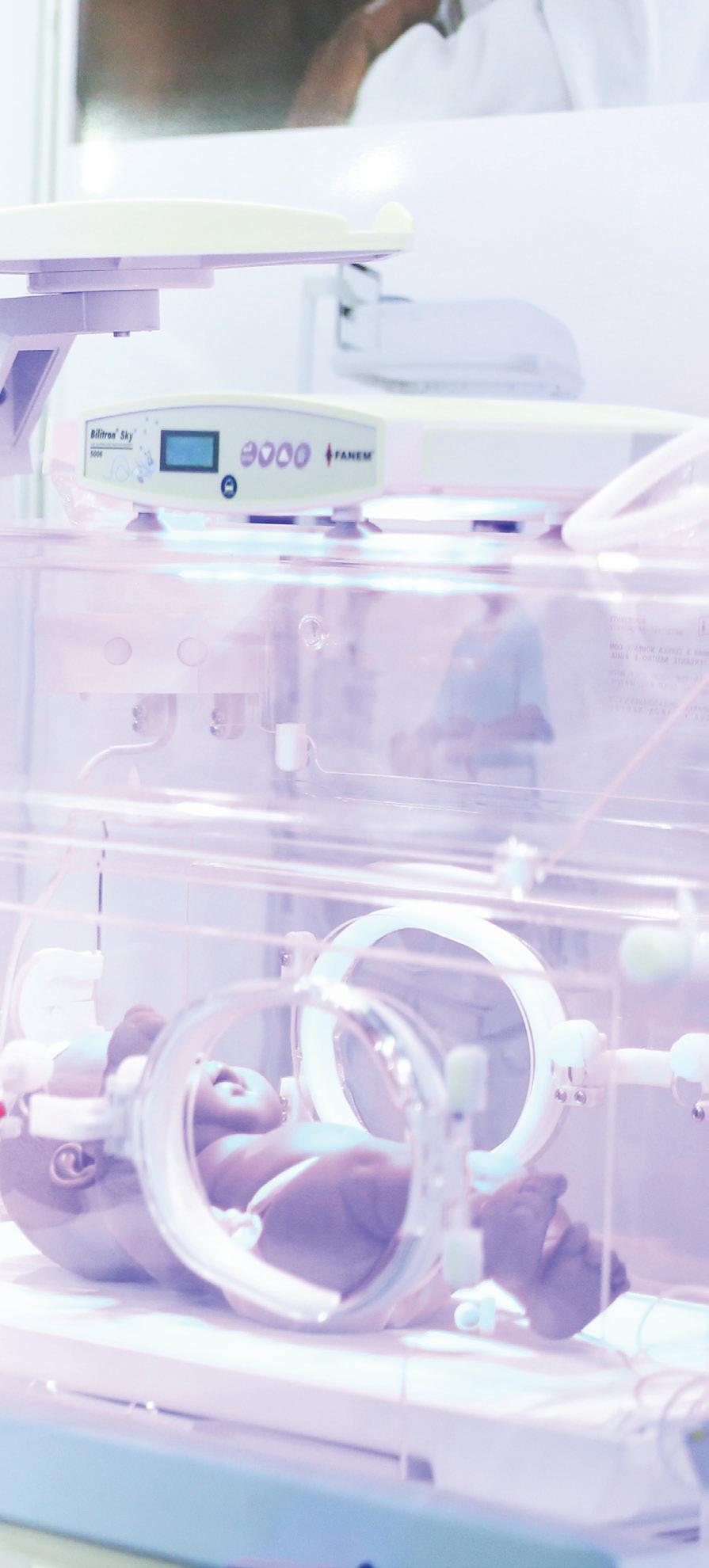
• Senior/Junior Clinicians who must stay up to date with medical speciality developments and products that impact their role.
“Africa Health provides an invaluable networking opportunity whether you’d like to source products, make new investments, gain new knowledge, or strengthen business ties with the healthcare community,” says Makarutse.

Co-operation is absolutely key to the development of best practice in healthcare at large. Development, innovation, and ingenuity can only come about when we challenge our ways of approaching problems - and the best way to do this is through the sharing of our learnings, especially so at the forefront of healthcare.
Earlier this year Imperial Private Healthcare launched their new project, the International Affiliate Network, established to develop relationships between ambitious hospitals across the world, enabling them to share knowledge and expertise, and advance patient care. The network strives to ensure that member hospitals can not only widen their services
and care through collaboration, but that they can share their learning with other organisations. As such, this network is not simply a one-way improvement service, but a truly collective project.
Aman Hospital in Qatar is the first partner in the International Affiliate Network and is already benefitting from being part of the programme. A leading hospital in the region, Aman Hospital prides itself on providing cuttingedge standards of care, delivered by experienced clinicians. With practitioners who have graduated from Johns Hopkins, Harvard, Chelsea and Westminster Hospital in London, the Mayo Clinic, and many more, the staff at Aman have obtained their certifications from the best medical institutions in the world.
This new 100+ bed hospital aims to define the future of healthcare delivery in Qatar and the region by combining unparalleled professional expertise, cutting-edge technology, state-of-theart equipment, service excellence, a relentless pursuit of medical innovation, and deluxe hospitality, all with a focus on patient-centred care. The main goal is to integrate the quality of care with the highest quality services which include 5 Centres of Excellence, 16 speciality clinics, VIP and Royal suites and hospitalitytrained staff.

These days it’s common for hospitals to partner with other organisations,
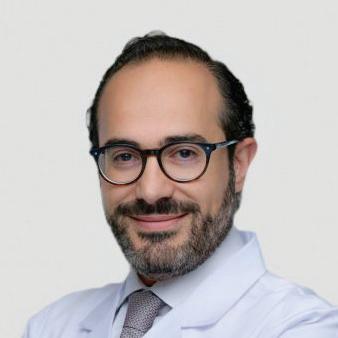
especially ones far away from them. Yet all too often, these partnerships are in name only. They still sit as separate organisations, and the benefit of the ‘partnership’ is merely for recognition. “As a hospital we wanted a stronger affiliation than just a standard partnership. This isn’t an affiliation just by name, but one whereby you actually serve the community better together; you improve the quality of care together, and the quality of teaching and education together,” says Dr Ali Haydar, Chief Medical Officer at Aman Hospital.
Imperial Private Healthcare is part of Imperial College Healthcare NHS Trust, one of the largest teaching hospital groups in the UK, and consists of 5 London hospitals – Queen Mary’s, The Lindo Wing,
Charing Cross, Hammersmith, Queen Charlotte’s and Chelsea, and The Western Eye Hospital. With more than 500 medical consultants it covers all clinical areas and specialities, and has a long-standing tradition as one of the most important medical institutions in the UK.
“The network’s aim is principally around developing healthcare capability around the world. The NHS values that surround the knowledge transfer are really important to embrace improving healthcare in the regions where we have worked for years and from where we continue to receive patients,” says Alistair Russell, Business Development Manager at Imperial Private Healthcare.
Another benefit of the network is that in addition to the deep-rooted nature of the partnership, it also allows member organisations to tailor-make their partnership, based on their vision, strategy, and needs and requirements. “The benefit of this affiliation has been developed together between Imperial and Aman when we were forming the partnership, and it turned out to be a very interesting concept and idea,” says Dr Haydar.
“The concept of the transfer of knowledge with Imperial was really developed to go both ways - we are two different worlds, with two different pathologies and two different sets of requirements, so it’s really reciprocal,” he continues.
Aman Hospital is a fully digital and paperless organisation – the only paper to be printed is the consent form which cannot be digitally signed in Qatar. “We have seven operating theatres that are all connected to an advanced digital system that allows us to transfer data either internally to our conference rooms or externally. So if we’re doing an operation and there’s a question, I can easily log in someone outside the theatre, even at Imperial, and ask for an opinion
“This isn’t an affiliation just by name, but one whereby you actually serve the community better together”
Dr Ali Haydar Chief Medical Officer Aman Hospital in Qatar
on the spot. The same thing would apply to endoscopy, even radiology or interventional radiology procedures.”
As Aman is a private hospital, they do not normally recruit all specialities or deal with all pathologies. They can treat 80 per cent of the pathologies but 20 per cent will need different expertise, perhaps in a specialist centre. With the affiliation

in place, the consultants can reach out to Imperial and transfer a patient if the MDT team across both hospitals considers it necessary, ensuring continuous care across continents. “It’s absolutely a win-win as we specialise in different things and without the network, neither of us can offer a full pathway to certain patients,” says Alistair.
“Imperial can’t offer clinical services in Qatar, but we really want to be able to tap into that market,” he continues. “Aman Hospital wants to specialise in certain centres of excellence that we provide, but they can’t necessarily access or provide everything they need due to justifying the investment for the volume of patients. But together, using each other’s services, and sharing our expertise,
we can offer the full pathway. So, from the patient perspective, they’re getting the full pathway under one roof.”

The almost universal use of digital meetings on platforms such as Teams has made second opinions and knowledge transfer much easier. For patients travelling to London for surgery, they will have already met the doctor virtually and
the notes can be transferred instantly, reducing anxiety and long on-boarding procedures.
“When a patient presents in Qatar and is diagnosed, they can be treated up to a certain point and they may choose to have an opinion from an Imperial consultant on a peer-to-peer basis. If they decide to transfer to London, it becomes a managed
service by our teams, says Alistair.
“Before this, patients would have had to do it themselves. Now we are confident that we are all updated when the patient arrives, and that we are discharging them back to a team we know. It’s all been enabled through telemedicine and advisory work, and the benefit to Aman Hospital is the complete end-to-end pathway.”
For Clinical Lead Dr Bassem Safadi, this knowledge transfer is extremely beneficial. “Through the network we can connect with a big institution and actually get people from there to train our staff, or send some of our staff to London to get special expertise, and that’s something we think is very important,” he says.
Alistair Russell Director of Business Development Imperial Private Healthcare
Again, this is not a one-way street. “For example, Aman called us up and asked for our thoughts on Lasik equipment and if we use it,” says Alistair. “We checked with our consultants and they confirmed what the staff at Aman wanted to know, giving them the guidelines that we follow. Equally, Aman Hospital operates brand new equipment not available yet at Imperial.”
The peer-to-peer learning is highly regarded by both institutions. “We will hopefully sign up all their doctors as observers and participate in life with us and vice versa, blended with face-to-face contact,” he adds. For Dr Safadi, it’s also a personal benefit; “There is also much to be gained for the clinical team, as well as for the institution and the patients,” he says.
“It’s absolutely a win-win as we specialise in different things and without the network, neither of us can offer a full pathway to certain patients”
From Imperial’s point of view, Aman Hospital has an innovative approach to holistic care. Hassan Elbouatmani, Chief Hospitality and Operation O icer, comes from a hotel background, and his aim is to enhance the whole patient experience. “Treatment is also about what the patient hears and smells,” he says. “A calming and stress-free environment in a hospital can help the patient recover faster. We’re o ering a service that relies on hospitality and we are confident it can translate into the healing process.”
Aside from the gourmet restaurant and executive chefs, Hassan is keen to serve the patients the food they would like to eat at the time they would like. “It’s not about serving them breakfast when they need to sleep, or giving them dinner when they aren’t hungry,” he says. “They are more likely to eat appetising food when they are ready and reap the benefit. From that point of view, yes, it’s more like a hotel with room service, but it feeds into the patient recovery.”
Equally, Chief Nursing O icer, Trudy Rowsell, is promoting a multi-speciality concept that interests Imperial. With global workforce shortages an issue for all
Dr Ali Haydar Chief Medical Officer Aman Hospital in Qatar
Chief Medical Officer Aman Hospital in Qatar
of them are not available in the whole Gulf region, such as the transcranial magnetic stimulation, which is an FDA approved treatment for depression and chronic pain, and robotic interventional radiology, so we are able to o er a reverse pathway for those who would like to come to Qatar for treatment with our technology.”
providers, a new approach is vital. “I’m looking at an agile workforce, trying to move nurses around in di erent areas and giving them those skills so they gain a greater portfolio which delivers job retention for the hospital,” she says. “Again, this will deliver a better patient experience as the nurses will have a greater skillset to o er.”
Lastly, with the long period of tradition and history that Imperial enjoys, new institutions can benefit from the experience in areas around governance, policies and procedures, and patient safety. “We’re very interested in global healthcare and internationalising care,” says Dr Haydar. “Up to 90 pieces of our equipment are state of the art and some
All in all, the International A iliate Network provides an unprecedented opportunity for hospitals, clinicians, and patients to access higher standards of care around the world, and for organisations to build and grow together.
If you would be interested in joining Imperial’s International Affiliate network, please contact Alistair Russell, Imperial Private Healthcare.


“We’re very interested in global healthcare and internationalising care”













Jyoti Mehan of Health Care First and Mona Hayat of Nexus Digital Technology speak to Healthcare World about an exciting new solution to help patients manage comorbidity better



Comorbidity is a pressing issue in the healthcare environment, and one which is very much on the rise. According to the NIHR, 54 per cent of patients over 65 in the UK had two or more conditions, a figure which is expected to rise to more than 67 per cent by 2035. Those with comorbidities are more likely to experience poorer health, worse quality of life, and a higher risk of poor outcomes and death.
Furthermore, with many nations now experiencing or expecting ageing populations, not only will comorbidity become more prevalent, but patients will require more care, and more complex treatment pathways, all while facing a worldwide shortage of clinical staff.
Yet, we cannot stop comorbidity and multimorbidity from occurring, and if we do nothing, the problem itself will only continue to worsen in time.
This is an issue which does not have a simple fix. The global workforce problem, ageing populations, and digital literacy are not issues that can be tackled in a day, but require years, and sometimes decades of investment and attention - if they can even be helped at all.
So what does this mean? Should we simply allow comorbidity and multimorbidity to run rampant, unchecked? Not according to Mona
Hayat, Founder and CEO of Nexus Digital Technology and Jyoti Mehan, CEO of Health Care First, who are collaborating on an AI and Machine Learning driven digital solution which aims to tackle this issue.
The platform itself develops bespoke, personalised care pathways for the patient, utilising clinical and non-clinical interventions in a coordinated and clinically overseen way, thus providing a valuable service to the clinician and the patient with ease and convenience.

“We are working together on the development of a digital tool that addresses some of the challenges surrounding comorbidity and multimorbidity that we see in general practice, with the expertise of Nexus to deliver against that,” says Jyoti.
“We are seeing a high emergence of comorbidity and multimorbidity conditions within many of our patients. The key focus of this project is about long-term condition management, and how we can help to support clinicians to prioritise their time and at the same time enable our patients to self-manage.”

This new project will focus on three key areas of concern - the first of which is to recognise where comorbidities exist and new ones which have occurred, secondly to release the burden on the clinical teams who are already stretched thin in terms of both time and resources, and thirdly to enable patients to take a more personal charge of their own healthcare.

However, Jyoti makes it clear that this solution should not be impacted by the digital literacy of the patient. “We don’t want to create digital inequity, and this is not a digital-only, digital-first model – it’s a blended, hybrid approach to care. It will direct activity to where it needs to be, pinpoint those patients that need to be seen, either physically or virtually, and move forward from there,” she says.
A patient presents at the GP Practice/ virtually via the app or is proactively identified via GP records.
The app is integrated into their medical record for ease and convenience.
An automated patient-needs analysis is undertaken identifying need i.e. diabetes management, cardiac optimisation etc.
Holistic Package of Care (HPC) is digitally created. This is reviewed by a clinician only when alerted if the AI detects any concerns.
Patient engages in all aspects of HPC at a time convenient to them, via appropriate services i.e. clinical primary/secondary/tertiary services and non-clinical provision third sector services, and products and services under the following wellbeing themes; physical, emotional, intellectual, social, sexual, financial, spiritual and environment.
The patient dashboard enables clinicians to monitor integrated patient activity and outcomes.


“We are trying to achieve a very personalised journey for the patient that will benefit the clinician and the patient by addressing a systemic problem”
Mona Hayat CEO Nexus Digital Technology
Through this solution, a vast amount of time can be released to both clinicians and patients alike by removing the need for potentially unnecessary interventions that can be a detriment to both groups. It also provides the patient with the option to self-manage their care if they so wish, but if they are unable to do so or do not want to, the solution itself is a tool to access their clinicians and reach out when they are in need.


Further still, those who act as carers for these patients will be able to access this platform and engage with the clinicians and the patient journey in a clear and informative manner, ultimately enabling them to provide
care with greater ease and accessibility. “We are trying to achieve a very personalised journey for the patient that will benefit the clinician and the patient by addressing a systemic problem,” says Mona.
Yet digital solutions provide a tricky hurdle, especially when they are implemented for an older, non-digitally native population. However, with the right education and guidance, it could have the power to revolutionise the patient quality of life.















“If we can get over-65s who may have digital literacy challenges to be able to engage with this app, they will recognise the ease and convenience that it can

provide not only to them, but to their families as well,” says Mona.
“There has been a debate for ages about population health, social care, and public health - and they still don’t really fit together yet - that’s what this joint venture is all about.”

Contact Information





Using real-world data, predictive algorithms, digital biomarkers to advance proactive, predictive medicine. Huma’s technology powers digital ‘hospitals at home’ and decentralized clinical trials.



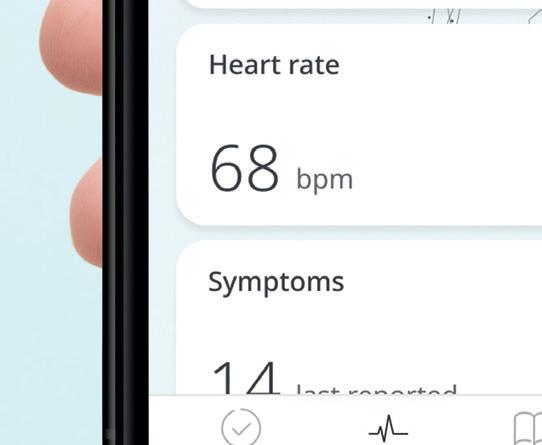




Government owned Skåne Care is the international gateway to the skills, services, and expertise offered by the Swedish public healthcare and dental care system. Sweden is in the top rankings internationally for having the consistently highest level of quality in healthcare as well as the longest life expectancy globally. We are also the number one EU innovation leader.

We offer comprehensive worldclass healthcare for international patients, training programs for medical professionals, and healthcare consulting services for clinics, hospitals, and administrators.
Our healthcare managers have over time developed the Swedish model – and are ready to take your healthcare to the


next level. We offer you a government partnership where we bring the learning points from the Swedish model. Skåne Care pride ourselves in understanding your needs and adapting advice to your situation.
Whether you seek to ambitiously upgrade your entire healthcare system or focus on a single task e.g., establishing a stroke pathway, we can help. Our healthcare consulting services can firstly help you
enhance quality, secondly increase efficiency, and thirdly cut costs within existing services.
As part of the day-to-day services as a healthcare provider in Sweden we understand the challenges you face and provide hands-on advice to ensure cost effective transformation. We give you PowerPoint-free consulting, focusing on ensuring strategy gets implemented for real.
Whether you just need a second opinion on your plans, a study visit to get inspired by another country, leadership training for your management team or some clinical upskilling for your staff… or you need comprehensive on-site support on a larger project.
Sweden
help!
Simon Swift of Methods Analytics, and Simon A. Jones, Professor, Department of Population Health at NYU Langone Health, explain how to build an effective population health management approach using data modelling
The healthcare needs of a population are constantly changing. As groups trend younger or older, ailments and diseases rise in prevalence or fall, it is vital for healthcare systems to pay close attention to evolving healthcare needs.
Yet, improving population health management is not an issue with a simple fix. To truly understand how to correctly
identify issues and direct resources to address the needs of the many, the data and underlying information available must be used correctly.
To examine how healthcare systems can improve their population health management, Simon Swift, Managing Director at Methods Analytics, and Simon A. Jones, PhD, xxxxxxxxxxxxxxxxx, shared their learnings and insights in a

fascinating Q&A session, detailing how organisations can use data modelling to understand changing healthcare needs in a population, and how to implement a truly effective population health management approach.
Q: How does an organisation begin to develop a good population health management system?
Simon Swift: It’s all about getting the prerequisites right. To understand your population, you need to understand who, where, and what in terms of both people and disease, and which services are currently in place in your system.
Firstly, you need to understand the conditions which are already prevalent in the population, and which would benefit from direct intervention. You need to identify the people who are at risk of a poor
outcome - such as people who are at risk of diabetes, blindness, or obesity-related conditions. From there, we can look to the people who already have a diagnosis - such as COPD. Can we identify those individuals, and are there services in the existing health system which can
mitigate that risk, or are there services which could be able to deliver better outcomes, but aren’t quite ready yet?

Secondly, you have to look at the costs of developing these systems, the manpower it will take, and the beneficial impact that it can provide to the population. You have to consider whether this is something that at a health economy level is viable and will deliver value to the population and to the provider.
From there, you can generate a checklist: these are the things which are present in the population which we could intervene on; these are the mathematical priorities which will deliver the most value; and these are the strategic priorities which are the most important to deliver.
After this, you now have a prioritised list of potential interventions, which can be developed and worked upon in real-time as needs change. It becomes a rolling, ongoing programme of population health management.
Simon Swift: You need the right data on your population, the right data on your services, and the right data on interventions, as well as data on the efficacy of interventions.
Regarding the data on your population specifically, we have to understand the people that live in the geography that we are responsible for. You need to know a number of factors about them - age, gender, ethnicity. Individually, you need to understand their health factors - do they have any existing conditions? Are they on medication? Do they smoke etc? There are many points of data that you need about these individuals, and the more that you can have, the bigger benefit it will bring.
You then need the right information about the environment that they live in. Information about income levels, air quality, transport, education and access to education - again, the more points of data the better.
Then, to truly develop a good population health management system, you have to be able to link all of this information together effectively, preferably at a personal or household level. Linking data is a really key part of the population health management approach.
Simon A. Jones: You also have to think beyond your own organisation - working

with healthcare providers, working with your local authority, towards better population health together.
It’s very easy for this to break down. Years ago in the NHS, there was a patient who needed occupational therapy. The question that we couldn’t answer was whether this was a social care need, or a healthcare need. The social care side and the healthcare side were both arguing over the responsibility and the budget, but they didn’t realise that if that patient didn’t receive occupational therapy, they were both going to be affected as organisations.
Q: How can you use this data to identify population health needs?
Simon Swift: This is the exciting bit, and there are three levels to it. Firstly, there is segmentation - separating your population into cohorts of people who are homogenous for the factors that you’re looking at. For instance, people who have dementia and diabetes - who are they in the population? How are they similar? How are they variable in other factors? Then we can start to identify groups in the population who need specific services and interventions.
Secondly, there is risk stratification. Within these segments, there will be people at varying levels of risk of specific outcomes that you can identify. For instance, in these groups of dementia and diabetes, there will be many who have well-controlled diabetes and mild dementia, who are low on the risk scale. On the other side of the scale, you will have a small percentage who are at very high risk of poor outcomes. We can identify these people and risks; we can predict the outcomes, and we can model the data.
The next aspect is the part that makes the difference, and that is impactability modelling - which examines how the current interventions will impact upon the people in these different risk groups. Historically, interventions are deployed primarily to those in the top five per cent of risk, and from our learnings, that’s a really bad way to approach the issue - as the level of risk is so high that it is very hard to effectively mitigate that risk through intervention.
What we have started to do is to silo the risk profile into three, four, or five different groups. For instance, Group A might have a 0 to 20 per cent risk of a bad outcome, Group B may have a 20 to 40 per cent risk, and so on. For the people in the highest group, it is almost certain.
“I would absolutely say that geographic funding with risk and benefit trading is a key requirement for a viable population health management approach”
Simon Swift Managing Director Methods Analytics
From there, you can define different interventions for the different risk groups. If we take falls for instance, the people in the highest group are going to fall no matter what we do - so we have to mitigate the impact of that fall - such as supplying them with hip protectors, giving them better footwear, or ensuring that their home is as risk-free as possible.
For the lowest risk group, it might just be a public health information campaign. But the most important group to focus on is the middle portion - which is where you see the most value and the biggest return on investment because if you can reduce risk from 50 per cent to 30 per cent, that’s enormous.

Furthermore, there are calculations that we can do to understand the impactability of these different risk groups, from which we can understand the return on investment for each intervention in each group, which allows you to say to the person paying the bill how a population health approach can benefit, and in what areas.
Q: What are the issues around funding in population health management?
Simon Swift: I’ve been in many meetings in the NHS where the solution to a problem has been held up because they can’t unpick who spends the money, and who receives the benefit. This is due to the fact that the NHS is made up of many small-scale organisations. For example, in order to prevent unnecessary admissions to hospital, GP practices might have to do more, such as putting in place review visits, follow-ups, and so on. The benefit of doing that is somebody doesn’t end up in A&E, which is a benefit for

the hospital and a benefit to the CCG. But neither of these groups have any relationship to how the GPs are funded and how they are staffed.
So, one of the key things for population health management is to be able to put in place geographic budgets and an understanding of effort and benefit trading between organisations. For example, one organisation will spend money on a new solution and the benefit of this will be seen in a different organisation. So either it all comes out of a single geographic budget or there is an understanding to trade effort and benefit between organisations. That has historically been a key blocker to this working in the NHS because organisations don’t understand the risk-share benefit-share trading system. So I would absolutely say that geographic funding, or risk and benefit trading is a key requirement for a viable population health management approach.
something called the rapid cycle randomised control trial, where we trial many different interventions for many different conditions. Bizarrely, we often find that one in five of these blindingly obvious interventions which have been shown to work elsewhere in the world actually make very little difference in our own locality. The US is doing better in terms of population health management because we are willing to stop interventions that don’t work and continue to iterate different interventions.
Simon Swift: For this reason any population health management approach needs to be designed carefully. This is not a panacea that will magically change the world - and it takes a long time to build up these interventions which really will make a difference for your own population, which can take years. What works elsewhere might not work for you. You always have to rebuild, recalibrate, and tune into the local population.
Simon A. Jones: There is a very different attitude towards it between the US and the UK. One of my day jobs is to help run
Q: What are the current attitudes towards population health management?
“The US is doing better in terms of population health management because we are willing to stop interventions that don’t work and continue to iterate different interventions”
Simon A. Jones Professor, Department of Population Health NYU Langone Health
Need to understand the NHS and the UK health system? Entering the UK Healthcare Market?
simply looking for insights from one of the world’s most well known healthcare systems?

uses UK Government national data already consolidated
redacted to provide a self service tool to help you analyse
for your needs.
help you understand
and providers.
drivers
population health
can locate your specific market, show you the volumes and
can
can use your
create the
From COVID-19 back to Non-Communicable Diseases, the UK has a diverse array of NHS, private and wider life science organisations that are keen to share their experiences and expertise, says Rahul Agarwal, Deputy Head: Healthcare, Department for International Trade UK

Health systems have adapted in response to new diseases, innovations, societal expectations and technological interventions for centuries. As the world emerges from the COVID-19 pandemic, there is renewed effort by developed and developing countries to adapt their health systems again, learning the lessons of this pandemic. The pandemic has not only threatened the sustainability of established health systems, but crucially the healthrelated Sustainable Development Goals
including the target to achieve Universal Health Coverage (UHC) by 2030 (SDG 3.8).
Monitoring progress towards achieving UHC focuses on the proportion of a population that can access essential quality health services; and how the burden of personal health costs can be reduced and protect households against financial hardship.
Achieving this requires all countries to continue to strengthen their health systems. The WHO defines health system strengthening “as any array of initiatives that improves one or more of the functions
of the health systems and that leads to better health through improvements in access, coverage, quality or efficiency.”
The pandemic has shown research, innovation and its translation through to products, services and clinical practice is key to achieving continuous health improvements. The rapid pace in biomedical and technological innovations has transformed the lives of many people. The ability to research and deploy C-19 vaccinations is a good example from the UK.
However, globally, one of the defining features of 20th century medicine was the fall in premature death rates due to infection, following the introduction of antibiotic therapies in the 1940s. Yet, as one risk is reduced, others have emerged: health services across the globe have worked to transform their systems to respond to the changes in disease burden
from infection to non-communicable disease (NCD) as causes for premature death or disability.
In 2020, WHO reported the top three causes of death globally are: Ischaemic heart disease, stroke and chronic obstructive pulmonary disease. These causes of death remain the same, despite the COVID-19 pandemic, and have even been exacerbated.
In early 2020, health systems rapidly pivoted and managed patients with COVID-19 through information and the reorganisation of services to treat patients suffering with the effects of the virus; and with Governments issuing urgent public health messages to underline the importance of transmission control. For many countries, this manifested in lockdowns that disrupted regular health treatment, impacting, in particular, the diagnosis, treatment and management of NCDs.
The figures are stark. In June 2020 – just weeks into the pandemic – WHO published a survey showing that prevention and treatment services for tackling NCDs had been severely disrupted since the start of the pandemic. WHO said that this situation was of significant concern because people living with NCDs were at higher risk of severe COVID-19-related illness and death. NCDs remain a key issue in 2022 as reported by WHO:
• Noncommunicable diseases (NCDs) kill 41m people each year, equivalent to 74 per cent of all deaths globally.
• Each year, 17m people die from a NCD before age 70; 86 per cent of these premature deaths occur in low- and middle-income countries.
• Of all NCD deaths, 77 per cent are in lowand middle-income countries
The NHS has evolved over nearly 70 years, adapting and changing to the needs of the population. Additionally, the wider UK life sciences ecosystem is a hot bed of private sector innovation. Achieving system excellence need not take other systems decades; the UK can share its successes and learnings. A diverse range of innovative UK organisations are delivering on the NHS Long Term Plan and driving UHC. The following example organisations are all open to international collaboration as well.
There are two clear fallouts from the pandemic:
1. It has highlighted the weakness of current health systems – especially those in middle and low-income countries progressing towards the UN’s 2030 goal of UHC.
2. In stronger health systems, alternative approaches have had to be found to deliver patient services differently, including through digital health.

Based on the above, the UK system is well positioned to support partners with experience and expertise across the multiple building blocks of a health system which the Department for International Trade (DIT) have identified as:
1. Policy
Strategy development
3. Regulation and clinical guidelines
4. Primary health care approaches
5. Public health functions including prevention and promotion
Health workforce development
Data and digital transformation

Innovation
9. Future proofing including net zero and pandemic preparedness
All are equally important to build and strengthen health systems, as they are to build resilience and sustainability. A diverse array of NHS, private and wider life science organisations have, and are keen to share, their experiences and expertise.

“Monitoring progress towards achieving UHC focuses on the proportion of a population that can access essential quality health services”
Rahul Agarwal Deputy Head: Healthcare Department for International Trade UK
• The UK has an integrated model of care focused on the patient, built and developed over these 70 years. It draws together expertise in healthcare financing, policy & strategy, regulation and clinical guidelines to create comprehensive healthcare systems. Organisations such as NHS England/ Improvement set a strategic direction; NHS Trusts such as Imperial College Healthcare NHS Trust or Guy’s and St Thomas’ NHS Foundation Trust work to deliver and improve services to its local population; private consultancies such as Lexica, Mott or Agencia which support the UK system with strategic redesign and planning consultancy; and national bodies such as NICE or General Medical Council (GMC) provide guidelines to the wider system.
• It has a nationally coordinated workforce planning system–monitoring of healthcare workforce, accreditation of training programmes, delivery of speciality education and continuous professional development. UK organisations such as Health Education England (HEE) build the foundations of capability, while organisations such as Kings Commercial, Royal College of Practitioners (RCGP) or NHS Leadership Academy provide education & training packages.
• It also has an organised system with sophisticated data collection for direct care, service planning and research. This is the keystone of organised healthcare in the UK for 100 years. Rich data sources enable digital technology ecosystem including teleconsultations, self care and care management and highly diverse private sector. Organisations that strengthen the health system include digital health consultancies such BJSS, Difrent, Methods Analytics or AdviseInc that offer various solutions bespoke to the needs of the system.
• Primary care and public health foundations of the NHS include education and professional development through to organisation and commissioning services, enabling patients to access all NHS services. These encompass organisations that provide innovative local primary care delivery in the UK such as AT Medics and Modality, to wider national resilience on public health including UK Health Security Agency (UKHSA).
• Innovation – there is quick systematic delivery of innovation through organisations like Accelerated Access Collaborative (AAC), NIHR, NICE and Academic Health Science Networks
(AHSNs). The rapid adoption of new approaches, for example, genomics –from sequencing, research, personalised healthcare and prevention – with underpinning education and training services, as well as new approaches to emerging challenges–e.g., sustainability, cutting edge infrastructure and pandemic response. Organisations such as the Cell & Gene Therapy Catapult or Congenica in precision medicine; Currie & Brown in smarter infrastructure; Newcastle NHS Foundation Trust in decarbonisation; and NHS South, Central and West or Diamond Light Source in pandemic resilience are all great examples here.
The UK Department for International Trade (DIT) has created an insightful collection of leading UK innovators from the public and private UK healthcare sector who want to work in partnership with healthcare providers and organisations internationally.

be found

We organise virtual events that bring the world of healthcare to your office or take you from your office to healthcare events all around the world.
We organise our own major events like Vision Health 2023 with the Saudi Government and we create networking events in the fringes of major global healthcare gatherings like Arab Health, HIMSS and Africa Health.
Above all we help our customers and friends enter new territories, supporting them with everything from content and marketing through to market scoping, product development and cultural fit.
With Bleepa and CareLocker, remote access to world-renowned specialist advice and clinical team working has never been easier, says Nick Mayhew, Chief Marketing and Sales Officer at Feedback plc
Two things are needed to empower clinicians to make better decisions: fast connections to colleagues and easy access to meaningful patient data.
At Feedback, we understand that both can be difficult to achieve right now. Data is usually siloed within provider systems, with clinicians reliant on outdated technology to communicate when they are not physically co-located.
Obtaining a second opinion on imaging or blood results from colleagues without a simple means of communicating is not only inefficient, frustrating, and tiring for overstretched clinicians, but it can also delay much needed treatment and diagnostic pathways for patients.
Through our products Bleepa and CareLocker, we provide a digital infrastructure that links care settings by ensuring that data travels quickly and securely with the patient and is available to every member of the clinical team, regardless of their location.
Bleepa is a mobile patient record accessed using a clinician-facing smartphone and tablet app. It combines the user experience of the most popular consumer messaging platforms with advanced medical-grade image annotation and sharing capabilities, easy document uploads and instant messaging.

Bleepa is an encrypted application, with no patient data ever stored locally on any device. These security standards have ensured that it is the only CE and UKCA-accredited medical app of its type available and in use by the NHS. Furthermore, its manufacturing processes strictly adhere to the ISO 13485, ISO 27001, and Cyber Essentials Plus security standards.
Meanwhile, CareLocker is the secure cloud-based architecture that can be used by patients to view, store and share their medical information with their clinicians. It does this by safely integrating with primary and acute care record systems to create a wrapper of clinical data around each individual patient.
As a key partner to some of the UK’s leading NHS provider organisations we have already deployed our secure, user-friendly digital infrastructure to individual NHS care providers.
We are immensely proud to have embarked on a succession of pilot schemes designed around this vital strategic goal. Many of these schemes have evolved into
lasting commercial partnerships with pioneering NHS healthcare providers.
They include Royal Berkshire Hospital NHS Foundation Trust, Northern Care Alliance NHS Foundation Trust, and the Sussex-based Queen Victoria Hospital NHS Foundation Trust (QVH).
Our most recent commercial partnership, announced in September, sees our Bleepa and CareLocker solutions connect QVH, a diagnostic hub and world-renowned specialist centre, to general practitioners in the region, establishing new end-to-end symptom-based care pathways to speed up patient care.
The flexibility of our technology enables its use across a broad range of clinical settings and geographic environments. This means that care professionals in remote locations can easily send information, imaging and documents not just to clinical specialists in-country, but globally.
For clinicians focused on care and diagnostic work in remote or rural locations, the third solution in our portfolio, BleepaBox, provides the means to send high quality digital clinical imaging produced on the ground to be sent to specialists based in more centralised clinical hubs for diagnosis.
The solution is a small tablet device that connects to imaging machines, and transfers scans and x-rays captured on these machines to Bleepa over a mobile network.
For the past seven months Feedback Medical has been supporting a rapid tuberculosis screening programme operating in remote care facilities across the Indian state of Odisha.
The Amazon Web Services-backed programme, which centres around the

Evangelical Hospital Khariar in the rural Nuapada district of the state, works with artificial intelligence (AI) solution provider Qure.ai to analyse chest x-rays.
BleepaBox is the tool used by diagnostic professionals to securely transmit clinicalgrade images to radiologists, who then triage the scans and alert colleagues on discovering indications of abnormalities that would indicate a TB diagnosis.
This whole process takes a matter of minutes, thanks to the BleepaBox hardware and Feedback Medical’s secure cloud architecture, which stores the images to enable access from multiple locations.
Describing the impact that BleepaBox, Evangelical Hospital Khariar Medical Director Dr Nibedita Pramanik said: “Since we started using BleepaBox at our hospital
a few months ago, it has helped us with quicker TB screening and identification.
“Once the x-ray is done, it is scanned through the AI-linked platform, Qure.ai, which evaluates it and sends a structured report and medical-grade images to the Bleepa clinician app on my mobile.
“I can check the report on my phone and give my opinion quickly. Through this technology, we have been able to save time and start early treatment for TB patients.”

“The flexibility of our technology enables its use across a broad range of clinical settings and geographic environments”
Nick Mayhew Chief Marketing & Sales Officer Feedback Medical














• Training programmes designed to meet your specific educational requirements
• Tailored consulting services to improve your operations and patient care
• Rapid access to second opinions from over 500 leading doctors
• Extended complex care pathway, with managed overseas referral service to our London hospitals and discharge to your hospital for onward care.
• The opportunity to promote your affiliation to Imperial Private Healthcare.

Imperial College Healthcare Private Care International Affiliate Network is a global network of aspirational healthcare organisations, working collaboratively with Imperial Private Healthcare to improve patient care.
Expert multidisciplinary teams work with member hospitals to complement and develop patient care, by advancing clinical services and providing a managed complex overseas referral service to Imperial Private Healthcare.

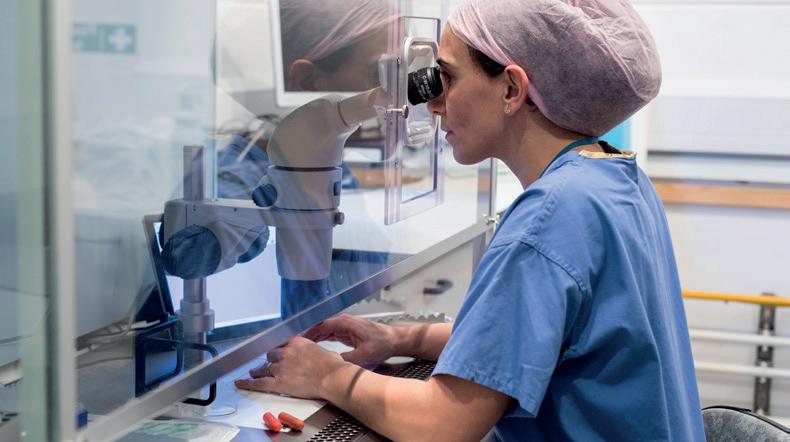
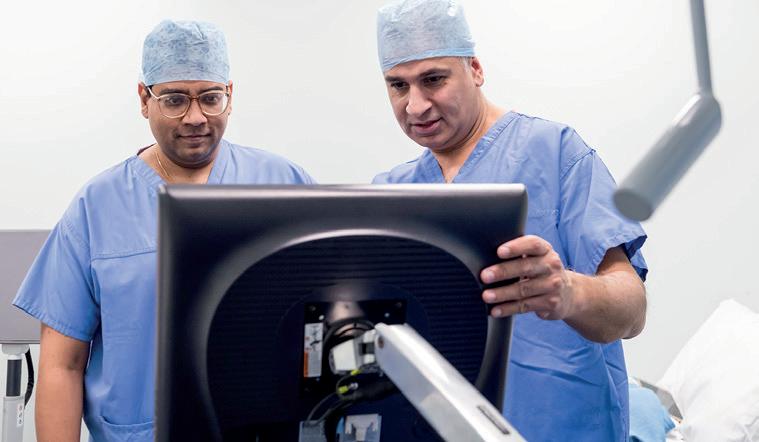

Imperial Private Healthcare forms part of Imperial College Healthcare NHS Trust, one of the largest teaching hospital groups in the UK.
imperialprivatehealthcare.co.uk/affiliate-network/
Imperial Private Healthcare is proudly part of:
Delivery of the Kingdom’s ambitious healthcare vision: how to optimise the use of PPP, is considered by Helen Pickering Global Head of Healthcare and Mike Felton Senior Director at Currie & Brown
The plans and policies emerging in Saudi Arabia’s Vision 2030 economic development program represent major opportunities to improve the health of its growing population. Patients and the wider community will benefit as the Kingdom sets out to create a world-leading healthcare system.

The Health Sector Transformation Program puts health at the forefront of national priorities. It is encouraging that it will target prevention as well as cure and place people at the heart of its service delivery.
This will be a huge leap in the quality and quantity of service delivery, and a significant investment in healthcare infrastructure is needed to embrace the latest digital
technology and innovations from across the world. To successfully achieve this ambitious vision, effective planning, resources and experience will be crucial.
Governments are turning to publicprivate partnerships (PPP) to fund and manage major investment in services. Typically, a PPP will provide private funding recovered over a long-term concession period, usually 20-30 years, and the management vehicle will then deliver services to the public sector over a fixed period of time.
Healthcare delivery via PPP is complex; however, a well-managed program will identify, apportion and mitigate risks before they arise. A skilfully structured model, coupled with effective contract
and operational management, can provide access to new ideas, finance streams and risk management expertise to create a patient-centred service responsive to future changing needs.
Hospital projects are intricate interlinked structures, balancing the many solutions to address patients’ individual needs. PPP has the potential to be applied effectively to the broadest range of healthcare projects, from small community-based services to major hospital developments. Whatever the size, the principles remain the same. Decisions should be made in the context of an overall plan for the healthcare system and the experience it will deliver for patients.
What does it take to effectively deliver a PPP financed healthcare system and what needs to be considered at the planning phases?
Seven key considerations should be taken when successfully delivering a PPP healthcare system:
With major urban centres being built and a new healthcare system emerging, Saudi Arabia is well positioned to take advantage of the latest thinking and learning from across the world to implement it for the optimum benefit of patients. Establishing a project in the context of the plans for the wider health economy and in the context of a program where bidders can be comfortable as to long-term viability for their investment is crucial to success.

While not PPP, the Whipps Cross Hospital Redevelopment in London is a great example of how Currie & Brown are helping achieve this with service transformation and patients at its heart. The vision is to establish an integrated healthcare and wellbeing campus to facilitate and accelerate service change across the local health system. Engagement with system partners, pushing the boundaries in how to truly transform delivery of care, and the utilisation of digital solutions is at the core of the c$930m redevelopment.
Having driven the project since 2018, establishing the program management office, Currie & Brown have been providing project and cost management, as well as business case services and specialist advice. This has developed into an effective integrated delivery framework structure and has helped the management, coordination and inclusion of the stakeholder and partner organisations across the region.
The procurement should give bidders scope to innovate but within clear parameters so as to minimise bidding costs and avoid duplication of effort.
The $150m PFI project at North Middlesex University Hospital NHS Trust in London to provide new diagnostic and treatment, emergency care and acute critical care centres was a good example of achieving this.
As a relatively late PFI project in the UK, it actively embedded learning such as this from previous PFIs, supported by Currie & Brown as trust-side technical advisor.
Currie & Brown understand the balance of responsibilities, having experience of working in different roles over many years. As well as equity investor and public sector advisor, they have also acted as the funder’s technical advisor, an example being on the University College London Hospitals (UCLH) NHS Foundation Trust’s $480m PFI where they acted as the lender’s technical advisor for more than 20 years, from initiation through to financial close, construction and operations.

Experience tells us that anticipation of changing needs and demands should be built into the design and contractual frameworks for new PPP hospitals, which should be capable of efficient response to emergency demands as well as technological and clinical developments.
Barnet and Chase Farm Hospitals NHS Trust (now part of the Royal Free London NHS Foundation Trust) is a good example. This project required major changes to the structure of its Barnet PFI hospital in response to a new North London-wide service transformation strategy. This involved a major extension and reconfiguration of the hospital. Currie & Brown were engaged to
advise and manage this complex PFI variation and delivered a successful outcome against a tight deadline.
How can new technologies improve remote diagnostics and treatment? How can urban planning improve the health and wellbeing of communities? Which solutions are needed to meet needs in rural areas as well as in urban environments? These overlapping issues all need to be considered upfront to ensure current needs are met, and that plans for the evolution of the healthcare system meet the longterm growth in demand for high-quality integrated patient care.
Currie & Brown have worked with Bath and North East Somerset, Swindon and Wiltshire Integrated Care System (BSW) to support the development of a single integrated strategy that brings together the future requirements for buildings, medical equipment and digital technology. This strategy will enable sustainable delivery of a new health and care model to best meet the needs of the local population. BSW is using population health management to determine the facilities, scale and location that will be needed to respond to how patients will access care in the future.
Plans set out in the emerging infrastructure strategy include a new ‘front door model’ for emergency care, specialist ‘ring-fenced’ facilities for elective care and diagnostics, and new integrated care facilities that provide local access to primary care, community health, mental health and secondary
“Saudi Arabia is well positioned to take advantage of the latest thinking and learning from across the world to implement it for the optimum benefit of patients”
Helen Pickering Global Head of Healthcare Currie & Brown
care services for patients in rural areas. The system is focusing on repurposing various types of existing building to enhance environmental sustainability and rolling out the digital infrastructure needed to enable the development of ‘virtual wards’ and other technological solutions.
It is important to plan upfront the scope of the private sector partner’s responsibilities and what will be left to a state entity or other provider: apart from responsibility for the building, who takes responsibility for equipment services, cleaning, partnering, catering, laboratory and diagnostic services and clinical services, for example? Different economies take different views depending on political and social issues and where particular expertise lies.
Currie & Brown understand the importance of this having delivered PPPs from all perspectives. As well as delivering PPPs on behalf of the public sector, they have also been shareholder in a number of PPPs, most recently for the Badenoch and Strathspey and Skye, Lochalsh and South West Ross Community Hospitals in Scotland (via their Scottish hub PPP), which comprises two new community hospitals procured as one integrated project.
As project sponsor and project director, they took the community hospitals from inception through all stages to financial close as well as managing and administering the project during construction.
Build into the design of the hospital and into the contracts (payment mechanisms and key performance indicators) realistic incentives to achieve the commissioner’s requirements as to sustainability, adaptability, continued availability of facilities and the required levels of service. Experience shows that unrealistic requirements can create unnecessary cost and perverse incentives.
As with any integrated and complex PPP delivery plan it is important to have a strong and well-informed advisor by your side that understands the market, costs, available technology and knows what it

takes to deliver PPP healthcare projects in particular.
Currie & Brown are embedding the above points in the provision of their technical expertise in structuring and supervising PPP hospital projects in Latin America. Bogotá’s Hospital Infrastructure Program envisions the development of five acute care hospitals. The program will provide Bogotá’s healthcare system with 923 inpatient beds and will benefit more than 1.6m Colombians. The facilities will deliver high-specialty medical care and will work as teaching hospitals and research centres.
Currie & Brown were appointed as transaction advisor, tasked with the technical structuring of the program. They are providing advice on the characterisation and dimensioning of the projects (medicalarchitectural program and functional plan, medical productivity and bed capacity, supporting and ancillary service requirements); medical equipment and IT requirements; cost estimating and planning for the pre-construction, construction, equipping and operating stages; costbenefit analysis and payments mechanism, and definition of supporting services and performance indicators.
Currie & Brown are one of the leading international providers of technical and related advisory services to a diverse and evolving PPP/PFI/P3 infrastructure market. They are involved in projects with a combined value of over $100 billion. Currie & Brown have worked with more than 60 per cent of the UK’s NHS hospitals to deliver improved healthcare systems and facilities, and has offices in Saudi Arabia, as well as in several neighbouring states, advising and managing key social and economic infrastructure projects. For a decade, they have been a part of the globally respected Dar Group, which is renowned for its adherence and intrinsic understanding of Middle Eastern business culture and commitment to the long-term development of the region.

“It is important to plan upfront the scope of the private sector partner’s
and what will be left to a state entity
other
Mike Felton Senior Director Currie & Brown








































Lyniate offers interoperability and identity data management solutions that power meaningful interactions, connecting more than 1 million data endpoints across more than 1,700 healthcare organizations and over 3,000 applications.


























We put the right data into the right hands at the right time, in the way people need.
Learn
Vincent Buscemi, Partner and Head of Independent Health and Social Care at Bevan Brittan LLP, explains to HW Editor Sarah Cartledge how to plan for success
Taking the first step in establishing a new company overseas can be a daunting step. In many territories there are barriers such as language, customs and currency. But with the right help, businesses can make successful inroads into new markets.

According to Vincent Buscemi, Partner and Head of Independent Health and Social Care at Bevan Brittan LLP, many companies don’t consider all the necessary steps when making their move. This is where legal
advice can be hugely valuable, outlining the pitfalls and challenges to enable organisations to navigate the complications and save time and money in the long run.
Firstly, do your market research along with SWOT and PEST analysis. While this initial step is largely primary research - speaking to organisations and people who have already done it - there is also secondary
research that can take a substantial period of time, particularly if you have not done it before. Speak to peers and expatriates already working in the country to gain inside views, reviews and practical advice.
It’s not always necessary to rely on specialist business consultants to analyse existing sources of information, research the marketplace and target potential customers, although it does help. There is a lot of information available through the government and British embassies, as well as online market reports that give valuable insights and analysis which is useful in helping to develop the business plan. Taking time to conduct meaningful research is fundamental and whilst it can be a time consuming part of the process, it is important because it will influence the business plan and help create the pathway for the route to market.
The next step is to undertake a feasibility assessment to understand establishment
and set up costs and benefits. It’s important to understand set up time –some countries are quicker than others – and entry requirements. Also ensure you factor in your internal governance requirements – if you are new to doing business internationally do you need internal sign-off?
Consider whether you have the necessary resources or whether you will need to recruit or partner up with another organisation to deliver. Clients who are interested in expanding into multiple markets usually try to rank the countries that are easiest to enter as the potential for growth is likely to be quicker. They make that investment into the easier ones because they understand that going into countries which are more challenging, that have more barriers or more hurdles to overcome, is a longer and more expensive game which can delay returns on investment.
The UAE is a really good example because there’s an established culture for welcoming foreign businesses into the country with clearly defined pathways that are pretty flexible and offer a lot of options to suit different types of businesses. As it’s a tried and tested market, there’s a lot of information available in terms of that secondary research analysis, and the government offers a good deal of support, so
organisations often find it a relatively easy environment to make that transition.

Other markets such as China, India and America are bigger but regularly come further down the list for new entrants. It is more complex to do business in those jurisdictions, with legal and regulatory frameworks that many organisations find confusing and somewhat daunting given the multitude of local, municipal, state and federal laws and regulations.
Many organisations will benefit from taking specialist legal advice early in their journey from advisers who are skilled and experienced in market entry. This advice covers a wide range of legal and practical issues from the use of virtual offices versus local representatives and branch arrangements, wholly owned trading subsidiaries and market entry by

“There can be a great deal of under estimation of the true time and cost of international expansion”
Vincent Buscemi Partner Bevan Brittan
partnership, collaboration or acquisition of an existing business, through to business registration, licencing and local laws and regulations.
There can be a great deal of under estimation of the true time and cost of international expansion. It’s not just about legal or specialist advisory fees or the fees that relate to the obtaining licences, permits or premises; it’s also the internal management time and costs. This goes back to the research point.

For example, what are the production costs to produce goods or provide services overseas? How do the overheads differ?
Setting up a new base in a different country will have a number of obvious costs such as office space, furniture, equipment, and employees, but there are less obvious ones to consider such as foreign exchange and how fluctuations may impact on your business plan. Another cost that often gets left to rather late in the process is the consideration of local and international

“Be flexible and open to opportunities, even those which do not fit with your immediate plans”
Vincent Buscemi Partner Bevan Brittan
tax, and issues associated with taking your money out of the country.
For this reason, organisations should engage accountancy and financial advice to understand issues such as financial risks (particularly in relation to cash flow and getting paid upfront or on time), taxation, reporting requirements, payroll, and repatriation of profits. Additionally, funding should be secured, maybe through grants or government incentives, and then a budget created.
Also consider what the ‘on the ground’ support might entail. In some markets, having local agents may be the best way of getting deals done and delivering your offering even if it doesn’t fit with your usual model.
Understand and plan for practical issues such as employee entry and visa requirements and bank accounts. There may be local requirement for a physical office, but a virtual office might be possible and can provide a physical address with

business administrative support services, while avoiding the costs associated with renting office space and having employees – particularly if you can do a lot of your actual business from wherever you happen to be in the UK.
Bevan Brittan generally tends to get involved in helping UK companies think about these issues and the structure of their international business model. Many organisations recognise the benefit of using UK–based lawyers to help during the
initial planning and establishment phase of their journey. We also have close ties to a number of in-country law firms who o er specialist expertise and a local “on the ground” presence to help clients move forward.

It goes without saying that it’s important to understand and respect cultural di erences, etiquette and business ethics, so you should adapt your approach and business model accordingly. It is hugely important to understand these di erences and to spend the time getting to know local contacts, particularly in places like the Middle East, China and India, where a great deal of business is conducted based on trusted face to face relationships. O en, companies in these markets will do business with and possible pay a premium because they like the people who stand behind the goods or the services in question.
Simply deciding one day that you want to export your goods or services into a new country doesn’t necessarily mean that you’re
going to find people who are going to avail themselves of those goods and services straight away. There is that necessary period of building up local knowledge, networking and forming relationships.
It’s important to have an open mind and be patient. You have to adapt, but adapting your goods or services to the new market is not just about the right product or the right service in the right place. It’s also about the right approach and taking time to build up relationships with customers, suppliers and third parties.
It’s important to temper the excitement or international expansion with realism. Be flexible and open to opportunities, even those which do not fit with your immediate plans, and for this reason you should create an exit plan for a potential failure or future closure. But more than that, the exit strategy is key because it focuses on the business strategy for entering the market in the first place i.e. are you going there to establish a brand
which you can then sell or are you making your company a more attractive target for acquisition? If the latter, then you need to consider whether buyers might be put o and would prefer to ringfence the British business from the foreign business? These are factors that need to be considered.

Not all businesses will succeed, of course, and may very well have not only cause consequences, but also reputational issues as well that could a ect the reputation of the business back home. You will also have to consider practical issues such as winding up o ices and repatriating sta , as well as intellectual property rights.
Taking all these issues into consideration will give you a good foundation for expanding your business abroad and taking your product or services to a global audience.






One Session Two Session Three Session Four
Promotive and Preventive Strategies for Advancing Men’s Health in Africa Reducing the Burden of Non-Communicable Diseases (NCDs) for Men in Africa


Attention accorded to men’s health globally and in Africa is generally insufficient. Reducing the burden of morbidity and mortality in men, has potential benefits for women, children, and the society at large.
The private health sector is increasingly realizing the value of men in the African health system and is introducing more men-centered health solutions and innovations in the healthcare continuum.


Join us on 24th November as we discuss the role of the private sector in advancing men’s health in Africa.
Reducing the Cancer Burden amongst Men “It’s more than the beard this Movember”





‘Guy’necology: Why Men’s Reproductive Health Matters The Present Global Crisis in Male Reproductive Health








For healthcare providers of all sizes, the quality of patient care is by far the most important consideration for the organisation at large. Without displaying a proven record of excellent patient outcomes and safety, they can risk falling behind the pack.
It is all too easy for prospective patients to evaluate care providers on their ownand naturally, any patient will look to the organisations which perform best and deliver the best care for them. Of course, health insurance, national health systems, and personal financial capability can play a big role in this, but it’s still best to be the best.
In order to be the best, mandated legal requirements, multiple accreditations and standards set by overarching regulatory bodies, must be met. Non-compliance has a severe impact on the service, reputation and revenue. When a service is rated inadequate, it is often forgotten that it is the patients suffering as a result of poor service, posing a big problem for healthcare providers.
how to improve their patient outcomes in real-time, Paul Johnson, together with Lee Williams, founded Radar Healthcare in 2012, to help healthcare organisations improve their safety and outcomes.
“We realised that healthcare organisations were in need of a solution that would help them digitise their systems and improve their efficiency as time is such a precious commodity in this sector,” says Paul.

“We also understood that at some point in our lives, directly or indirectly, we are going to be inside the health care system. Therefore, if we could create a really good solution to benefit the healthcare sector, it won’t just help people right now, but it can help us and our families later in life,” he adds.
Understanding that healthcare providers can really struggle to decipher where they are falling behind, and how to improve care in a proactive mode of operation, Radar set out to fix this problem. It can be very difficult for a healthcare organisation to find the areas that they need to improve in until they are already seeing the impact of falling standards and care quality, by which point it can become an expensive and timeconsuming problem to solve.
Money is an enormous consideration for providers too. Even if healthcare organisations had enormous amounts of cash to spend, simply throwing money at the problem won’t work - patient safety and outcomes don’t have a quick and obvious fix, and it can be incredibly difficult to pinpoint the areas which need improvement, and how to improve them at all.
Recognising the need for organisations in the healthcare sector to effectively realise
It is easy to recognise why this issue has plagued the healthcare sector for so long. With paper-based systems dominating hospital data systems and patient records, the only possible way for an organisation to identify issues in their standards and care quality would require real-time recording, observation, and action - a once impossible task.
However, with Radar’s solution eliminating the use of paper, and utilising AI and Machine Learning to monitor the data, this task is now possible. Operators can simply log on to the system, the AI can identify key areas which need attention in real-time as they occur, and most importantly, they can understand how to improve them.
“For example, there’s a patient safety tool called IHI Triggers, and this provides
information from the patient record to indicate where patient harm has occurred,” says Paul. “There is often a discrepancy between what’s been recorded in the patient record and what is reported in the incident reporting system. It’s also a manual process, which is very time consuming and subject to human error.
“One of the pieces of work which we are currently doing is looking at those IHI triggers and running them through the AI and showing people where they need to improve. The fundamental part of this is the automation - automated logging of
“Operators can visualise the data, recognise any trends in their data, and ultimately reduce patient harm”
Paul Johnson Co-Founder Radar Healthcare
these incidents as they occur, automated responses, and automated workflows, which is run through the machine learning system so that operators can visualise the data, recognise any trends in their data, and ultimately reduce patient harm.”

Furthermore, Radar’s system has seen an enormous amount of success. With more than 70,000 users, and operation in hundreds of primary and secondary care organisations in the UK alone, Radar provides their solution to a massive range of di erent healthcare organisations.

“We cover the whole health care continuum. As a result, the system is really scaleable. For a small organisation with one or two locations or services, the system is scaled to help them to thrive within the environment they operate in. For a massive healthcare organisation, with hundreds of complex services, the system can then start to get holistic oversight of service and performance,” says Paul.
“These two systems can then feed into one another. There is the flexibility at the local level for people to operate and get great benefits from the system,
but this feeds into a central oversight, providing the ability to drive change and improvement across the whole organisation, and the whole healthcare system at large. That’s where we really deliver great value.”
Accessing and using data is an incredibly powerful tool in any corner of healthcare. Evidence and data-driven solutions now form a cornerstone of best practice - and having the correct approach to using data is vital.
Yet, this is far easier said than done. For smaller organisations, there is often a lack of useable data, posing a genuine issue for operators hoping to use data to model and manage population health.
Conversely, the data provided by large healthcare organisations is often disconnected and incredibly complexnot to mention wildly varying in quality. This issue complicates the use of data, often leaving goldmines of data gathering dust.

The NHS’s national datasets are a perfect example of an untapped data resource. The information within these datasets are enormously helpful to the right people, yet using them can be incredibly complicated. Despite their free and ready availability, the format in which this data is published is far too confusing, and other options provide a simpler pathway to finding the correct data.
Data analysts Adam Townsend and James Pratt of VUIT understood how to take the information provided by these NHS national datasets, break it down, and present it in a useable, interpretable manner - enabling healthcare providers to harness the full potential of these massive datasets.
“It all began five years ago when we were working on a project and couldn’t wait any longer for the customers’ data sets. So, we looked at the national dataset and found the information was there, but it was impenetrable and impossible to make sense of,” says Adam.
“We realised there had to be a better way to visualise this data, so we started working on bringing it all together and presenting it in an interactive manner - where you can tailor the data and resources to what you need,” he continues.
Through collating these enormous, yet disconnected datasets, VUIT’s solution provides users with interactive and easily comparable metrics - allowing for better understanding of population health data.
Using a host of complex algorithms and data manipulation techniques, VUIT not only correlates sets of data which are disconnected, but can compare and cross-reference extremely specific points of data at both a local and national
level - resulting in valuable insights into population health that would have gone unrecognised.
“For example, one thing that we can do is map population health in specific geographies. For primary care, we then build in the locations of the GP practices and the care homes, and in this way we can know the locations of the over 75s, and factors such as the deprivation indices, or any other geographical considerations that it would be impossible to know otherwise,” Adam says.
Adam’s solution can be specifically tailored to the user needs as an organisation, no matter the size. Focusing on three key areas of ICS Strategy Support, Acute and Primary Care Benchmarking, as well as private-sector business-case support, VUIT can be the one-stop shop for population health insight.
“To understand where you should focus your resource as a healthcare provider, you have to know where the needs are. For instance, for a nurse who specialises in diabetics, you need to understand where
there is a high prevalence of diabetes and which GP surgeries those diabetics go to. From there you can find which ones are lacking in sta and that’s where you direct your resources,” he adds.
“Throughout the decision-making process, you’re no longer listening to di ering opinions. You’re using the data to eliminate the need for discussion, as the solutions become completely obvious.”

In the MedTech industry, many companies produce innovations which have the power to be revolutionary, but fail to comprehend the markets and demand for their product at the early stages of development. This can result in dire consequences, and perhaps even the failure of the business at large. However, these businesses can use VUIT to navigate their way through the system.
“Companies that produce medical devices might say their device is amazing, and they’re going to sell millions of them,
but an investor might ask how many millions? How many of those are currently being used, and what can it displace? These are tough questions, but we can help them find the answers,” says Adam.
“We can show them their marketplace: how many products of a similar type are currently being purchased, if their product would displace others, and what their ideal price point is. We can also take this down to a very specific population level, and tell them what it costs the NHS, showing them exactly where they need to focus and what their pricing needs to be.”
In addition, by utilising redacted nationallevel data that exists in the public domain, the VUIT portal is fully GDPR compliant.
For international organisations looking to do business in the UK, VUIT can provide an even greater benefit to understanding appetite in the UK, without the need to approach healthcare providers individually, which can be a painstakingly long and arduous process.
“If you’re looking to enter the UK market and aren’t sure where to start, we can show you where your specific market is, what the volumes are, and what the clinical procedures are that could use the products that you provide,” says Adam.

Overall, VUIT enables healthcare providers and businesses alike to spend less time dredging through incomprehensible datasets. By enabling them to access the information they require in an interactive, streamlined, and intelligible manner, they can save valuable time and resources which can be better spent in other areas.

“You’re using the data to eliminate the need for discussion, as the solutions become completely obvious”
Adam Townsend COO / Co-Founder VUIT


Connecting healthcare industry professionals who value learning, networking and business



The UK’s first cloud-based electronic patient record can mitigate needless patient harm, say Dr Michael Brooks and Dr Philip Ashworth of PatientSource


How hospitals operate and manage patient records has experienced a tremendous overhaul over the past decade. Paper recording systems and outdated technology were commonplace and dominant in many health systems around the world until the advent of the digital, electronic systems which are slowly but steadily replacing them.
There are many benefits to an electronic patient record, but most importantly, the number one benefit that an EPR provides is enhanced patient safety. With an EPR system in place, there is far less room for human error in recording, far less chance of lost documentation, and far more time for clinicians to spend looking after their patients, rather than wasting time dealing with outdated and inefficient recording methods.
As a frontline clinician, Dr Michael Brooks was becoming increasingly frustrated with the backward systems he would have to use on a daily basis,
Dr Philip Ashworth PatientSourcePatientSource began pilot projects at leading hospitals in the UK, including the Royal Brompton & Harefield, the largest specialist heart and lung centre in the UK, and the Royal Hospital for Neuro-disability (RHN), an independent charity hospital specialising in patients with complex neurological disabilities.
“For the Royal Hospital for Neurodisability, one of the big motivations was to have a system that could fit their complex needs, and being a charity, with the budget that they had. It took us just 12 weeks from the green light to having live, complex e-prescribing on the wards,” says Dr Ashworth.
Additionally, PatientSource’s tried-andtested method of delivery can greatly reduce stress and difficulty when getting the system up and running.
“We used a phased implementation at the RHN - putting everything in all at once can be very disruptive for a healthcare organisation. We started with just one ward and began adding modules one by one - then moving on to other wards over time. By doing this, only a small group had to learn the system straight away, reducing that disruption,” says Dr Brooks.
“When we reached the second ward, the clinicians couldn’t wait to start using it, as they had already seen what their colleagues were using - so enthusiasm and engagement was really high.”
and realised there was an enormous opportunity to develop a system that not only made his daily life simpler and easier, but provided their patients with higher levels of safety.
Realising the need for a personalisable, effective solution, he developed PatientSource together with Dr Philip Ashworth - a solution designed by clinicians, for clinicians. The system is fully flexible to meet the needs of its clients, no matter the size, speciality, or location.
With options including a complete end-to-end system or modular setup which can be downsized or upscaled as needed, a cloud-based or on-premise option for data storage ensuring that patient data won’t disappear, and fully interoperable software which can replace or integrate with legacy systems for ease of use, it is clear to see why clinicians love PatientSource.
Outdated patient records systems aren’t just a waste of a clinician’s time, however. Sometimes, they can result in needless
patient harm - as Dr Brooks saw first-hand during his time as a clinician, and the last straw for him.
“In one case, there was a middle-aged man who was suffering from a brain bleed, and needed an angiogram, which has potential complications of stroke and blood clots. The angiogram was performed without issue, but the paper results were lost, so they had to repeat the test. On the second test, he suffered a stroke. He lost the function of the right side of his body, couldn’t talk, couldn’t walk, and was in a wheelchair, all because a piece of paper was lost,” says Dr Brooks.
“It took us just 12 weeks from the green light to having live, complex e-prescribing on the wards”
Seeing the glaring flaws of outdated record systems, Dr Brooks went looking for electronic patient record systems, but wasn’t impressed with the offering. He decided to create one himself, but he knew this was impossible to do alone. Reaching out to Dr Philip Ashworth, a friend from his Cambridge University days with extensive experience in the Med Tech sector, the pair joined forces to create a ground-breaking patient record system.
“I knew a digital system would be the best solution for patient management. The risk of transcription errors when you copy information across by hand is high, but

with a digital record it isn’t,” says Dr Brooks.
“In every moment of my free time, I was building a prototype system. As it came together, I started showing it to lots of other doctors and nurses and received good feedback. Many people were asking why they didn’t already have such a system.”
From there, PatientSource started to take shape. Working out of Dr Brooks’ garage with a small team of dedicated developers, they rewrote the code for the platform and continued to develop the system.
Now the company have clients globally from St Helena to the Middle East. With multiple languages supported, including
Arabic, French, German, Polish, Ukrainian and Hebrew, PatientSource is able to secure a strong foundation for healthcare providers and enable digitisation of healthcare systems across the world with a feature-rich, cost-effective electronic health record.
Josie Winter, Clinical Operations Director of Advanced Clinical Solutions, speaks to Healthcare World about developing clinical excellence in hospitals
In the hospital sector, standards have always been a tough hurdle to overcome. In some nations, this process is streamlined and simpleoften with one centralised set of rules and regulations to follow. While the process of ensuring that you are up to standard can be a long and difficult one, identifying the actual underlying issues can be far less arduous.
However, in parts of the international sector, this is not always the case. There
might be multiple competing versions of standards and regulations, or perhaps none at all - making it a real minefield for providers to get their care settings and hospitals truly up to scratch.
According to Josie Winter, Clinical Operations Director of Advanced Clinical Solutions (ACS), the entire process of ensuring and developing hospital standards in any healthcare system does not need to be difficult.

“Too often governors can be unsure if they need to follow the JCI standards, or the UK or US standards, or their own local standards - and trying to do all of these is a sure recipe for failure if you don’t have a plan,” says Josie.
“Sometimes, it’s easier to adhere to local and national standards. Lining these up with your patient needs and care and ensuring that the clinical setting – whether a hospital, a clinic or a practice - truly meets the local and regional patient need.”
“Equally, sometimes it’s best to tackle the issue by striving for the JCI or a UKstandard hospital - avoiding the issues of regional and national differences and having a concrete goal in mind. Neither of these decisions holds more merit than the other - it all depends on what your needs are. We can help you discover what these are, and realise the vision of achieving these standards,” she added.
As a team of highly trained healthcare professionals, ACS are experts in patient safety, regulatory compliance and quality improvements with experience in both the NHS and private healthcare organisations.

“We apply our knowledge across a number of services, adopting a ‘seek first
to understand’ approach to best serve our clients’ different demands, needs, wants and desires. Since attending Arab Health 2022 in Dubai, the impact of technology has become apparent to me, and I can see how shared resources could be achieved with an international guidance system in place,” says Josie.


• Exceeding standards for infection prevention and control
• Training to enable the retraining of new employees (train the trainer)
• Leadership and coaching (as required)
• Free updates and latest information
“I’m proud to say we’ve worked on several projects to ensure this goal, from film studios to local health authorities and beyond. In our experience, the key is always to review risk dynamically and make sure your standards are not just up to code but even better,” says Josie.
“One of the best ways to do this is by sharing our networks - it can be sharing a business card at an event or even connecting on a social platform. This will help us all progress as a community and effect global change,” she adds.
One of the strong goals of ACS is to further develop compliance at an international level, and show this can be achieved through collective learning and improvement, all with the provision of quality care at the heart of every conversation.
“As part of our brand ethos, it is vital that the patient should be, and always is, our number one priority,” she adds.
Following the impact of the pandemic and the reopening of international borders, the value of global reach is more important than ever.
“Being based in the UK with the ability to travel, we have learned the power of the digital landscape, and we know by collaborating effectively there is a real opportunity to affect change,” says Josie.
Josie Winter Clinical Operations DirectorWith the breadth of customers including nursing and care homes, private acute care and private clinics, universities and educational institutions, GP services, and legal and insurance providers, ACS identify key areas to target when bringing standards up to par, including:
• Preparing and suggesting audit levels (regulatory compliance)
“The most important piece in the jigsaw puzzle is the patient, who is at the heart of our work. By adopting compliant practices through clinical governance, education, learning and quality improvement, we can enhance patient outcome and ensure better environments for everyone.”
“The key is always to review risk dynamically and make sure your standards are not just up to code but even better”
Clinical Solutions

explains why the role of the GP is more vital than ever
The exact role of the General Practitioner is one that is hard to define. The clue is in the name - we are ‘general’ practitioners - jacks of all trades. Whether the patient is suffering from an injury, a seasonal illness, a chronic condition, or a mental health problem, the GP is always the first port of call in the primary care setting. ‘Cradle to grave’ is the common sayingthe GP stays with the patient throughout all stages of life.
It is very important to consider how this role of the GP has evolved over time. Back in 1948, at the foundation of the NHS, it was quite common for the GP to be the first and only port of call. All conditions and treatments were largely taken care of in the GP surgery within the local care environment, and patients would only need transferring for highly specialist or unique cases.
Nowadays, this system has changed dramatically with the development of healthcare at large. There is a far greater benefit that the GP brings to patient care, and that exists within its role in the community healthcare ecosystem. Take, for instance, a patient presenting with a particular set of symptoms, which the GP believes can be best treated by a specialist. The GP can undertake a preliminary investigation, reassure the patient, and most importantly, direct them to the right person.
In many healthcare systems sourcing consultants and specialists is left to the patient. As the GP already has a clear understanding of the intricacies of referral and the right specialists who fit the patient’s needs, this pathfinding role not only alleviates an enormous amount of stress from the patient, but it provides an enormous benefit to the specialists themselves. They can receive patients who fit their knowledge and profile exactly, allowing them to deepen their own expertise in their area, and make better use of their own time - something increasingly scarce in the modern day.
Of course, sometimes a patient issue does not require specialist treatment. This is where the pathway to local and out-of-clinic services comes in. The care provided by specialist nurses, district nurses, physiotherapists and counsellors within the local community can be exactly what the patient needs, but again, without the GP to direct the patient to these services, they may not be aware of the care available to them in these areas, or even where to look.
Overarching all this is the interconnective role that the GP plays, and the cross-system interoperability that comes from the GP record. In health systems where GPs do not exist, or do not function in the same manner as in the NHS, all too often separate organisations will be reluctant to share patient information with others, creating inconvenience for the patient and indeed for the clinicians.
When there is no centralised GP record, patients may have to undergo unnecessary tests and procedures in order for the clinicians at the new organisation to gain the full picture. Such activity also poses a danger to patient safety as issues that have already been identified may go unnoticed between organisations. However, with a GP record, this issue does not arise. A centralised, interoperable patient record which can then be shared between institutions, as and when they need it, is vital to realising the correct standards of care, without subjecting the patient to unnecessary investigations.
What is even more notable is the breadth of information which this record provides - a comprehensive analysis of the entire patient history, from the obstetrician’s notes to the present day. Without the GP record, and by extension, the GPs, this treasure trove of incredibly valuable patient knowledge would not exist.
It’s clear to see the role that the GP plays within the community health system. Not only do specialists at all levels of the healthcare pyramid receive more patients than they are specifically equipped to treat, but it relieves a huge proportion of the stress on the larger organisations, such as hub hospitals. Rather than patients having to travel large distances, or wait to see someone who may not actually be the right person for their condition, patients can access the correct care in a convenient manner, while the specialists are able to treat the right patients and deepen their own specialisation.
Although the role of the GP may have evolved since its inception, it is still an integral part of the NHS and other healthcare systems, and is crucial for delivering an excellent standard of care.















Mental healthcare buildings have come a very long way since their origin. Nowadays, the buildings for mental healthcare provision are almost unrecognisable – they are fit-for-purpose with a clear patient cohort and care journey concept. Yet, the design, and development of a truly world-class mental health facility is not an easy task and poses a great many challenges.
For Karen Flatt, Mental Health Lead for IBI Group of architects, mental health design covers a huge range of experiences and different age groups, and each one is very different. “Every project has specific design considerations, whether that is the security, the size, or the focus on care, and it can be extremely challenging,” she says.
“It really depends on the types of patients that you are dealing with. In nearly all
categories of mental health buildings, the most important considerations are safety and security - for the patients, the staff, and the visitors,” she adds. “Much of what we do in mental health isn’t written down, so you have to learn from experience and as a result become an expert.”
Karen began her career as a mental health designer by accident after she was given a mother and baby unit to design. “There is a lot of distress that the mothers go through and obviously, you’ve got to create the environment is possible in a caring environment that’s going to make them better and allows them to go home with their babies,” she says.
From there she was asked to design a teenage mental health unit, and she began to be fascinated by the challenges inherent in mental health design.
“It’s more complex than an office or a government building, and very rewarding,” she says.
In other areas of architecture, safety is always a top priority and is usually a consideration surrounding the dangers that the building can pose to its occupants. However, when creating a building for patients with mental health conditions, not only must the safety of the building be considered, but the risks to the patients from themselves to others, and to the building itself must be factored in.
“There are many ways to design a safe environment: you can make sure you have good observation and secure areas for staff, but we also need to design the building to minimise the dangers that people pose to themselves. That encompasses the design of the rooms, windows, doors, ceilings, the furniture, the whole enclosed space,” says Karen.
“But if you design everything for the worst-case scenario, then the environment can look very sterile and unwelcoming. So, at the same time as building in safety and security, we need to make sure that we’re
designing a space which is going to enhance patient wellbeing. It’s a real challenge because you have safety and security on one side, but then you’ve also got to have the homely, comfortable settings that make the patients feel better and recover faster.
“There are elements of the building that we standardise as much as we can, but depending on the building location you end up with a bespoke building because each one is different. Similarly, in the UK we are moving away from wards and using individual rooms with en-suite bathrooms. There are standard room designs but then each client will have different requirements.”

Furthermore, the issues surrounding the implementation of comfortable, homely features and furnishings to these buildings are not only hampered by safety and patient risk factors, but also by rules and regulations.
“If you design a space that has a lot of hard surfaces without any soft furnishings like carpets, curtains, and bedding – home comforts - you end up with a very harsh acoustic environment, and that’s not good for anyone’s wellbeing,” she continues.
“But while we might want to implement these things, we often can’t, for example because the infection regulations state that
carpets can’t be used due to the hygiene risk - despite the fact that some carpets can be cleaned as easily as vinyl or hard flooring.”
Ultimately, finding the correct balance between safety, security, patient comfort and client considerations is a continual battle for architects such as Karen. But through their expertise, they strive to find a middle ground which fulfils the necessary requirements, while also providing a comfortable living environment for the patient.
These days, mental health facilities are specifically designed for cohorts of patients: usually a specific age range or set of conditions - posing another consideration from a design perspective. It is no longer possible to place everyone with a mental health condition under one roof, as this would not only be detrimental to patient care and wellbeing, but also incredibly dangerous to patients, staff, and visitors.
“Every building is different, every client is different, and the patients are always different, which is why it’s so fascinating and exciting to work on these projects,” says Karen.
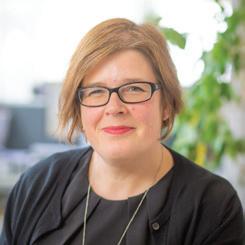
“The crucial part is the engagement process with the client, using real evidence to create our design - for instance, what the client has in their existing environment, what the client wants in the new building, and specific areas that they want to focus on.”
Designers must also consider what is needed for the building to fulfil the requirements for patient and staff wellbeing, such as areas for socialisation, exercise, and activities.
“Our philosophy centres around the ‘five ways to wellbeing’ ethos, ensuring there are spaces for people to connect with each other, spaces to exercise and be active, spaces for learning and self-betterment, and providing opportunities for giving and helping other people, as well as making the environment as a whole a space which people can enjoy and appreciate.”
For Karen, good access to outside space encourages people to go out and engage with nature. “Seeing trees, for example, lowers your blood pressure but quite often, depending on the security level of the building, we’re not even permitted to put trees into external courtyards. Similarly, patients can hide contraband in planters and grass, so it’s a constant challenge to design a harmonious outside space.”
Another equally important component is connectedness – having spaces where people can connect and socialise as they return to
better health. “Therapeutic engagement in a mental health building sets people on the pathway back to recovery, so a lot of buildings have open spaces for art, fitness and therapy,” she says. “Keeping fit is really important in these settings.”
Post-occupancy evaluations play their part in the design process. “Otherwise, how do you know whether your design is any good?” she continues. “We need to know what works and what doesn’t, so we can improve for next time.
“The physical environment of a mental health hospital isn’t really changing, it’s more the digital side of it – the use of technology to monitor patients and keep people safe. There are many new safety products on the market, as well as technology for other products such as flooring, that can make a building more therapeutic.”
Karen is currently in discussions with manufacturers to create new products with usefulness in mind. “Many products are good and helpful, but I think we have gone too far on the safety side,” she adds. “Colours and design are just as important to make people feel better about life, and it’s just as important for the staff working in the building too.”
Ultimately, the design of mental health buildings is something that can bring a real benefit to those receiving care, and to the providers. Without good design, not only does care become more difficult but so does the patient experience. “These buildings are for real people with real problems,” she concludes. “As architects we are trying to make their lives better and get them back into the real world so that they can live their best life.”
“The physical environment of a mental health hospital isn’t really changing, it’s more the digital side of it”
Karen Flatt Mental Health Lead IBI Group
Understanding the challenges in KSA is key to entering the market, says Ian Chambers, CEO of Linea

Across the healthcare sector, organisations are watching the evolution of the Saudia Arabian healthcare market. As the Kingdom undergoes the biggest national transformation to date, and perhaps the most ambitious global healthcare change globally, there are many challenges that lie ahead in the quest to make the system seamlessly e icient across the 22 new Clusters in the country.

With a huge workforce, a population of 35.84m and an area of 830,000 square miles, the task is daunting. However, there is a vast amount of talent and expertise at the Ministry of Health and there is also a wealth of sector knowledge outside the Kingdom that is available.
For Ian Chambers, CEO of Linea, there is a need for overseas organisations to think di erently around their o er to the Saudi market. “Saudi Arabia is trailblazing – it hasn’t been done before, certainly not on this scale and at this pace,” he says. “But true visions are designed to challenge convention. However, taking the best elements from di erent markets and joining them together doesn’t work. Key is shaping those aspects into coherent solutions which align to the regional dynamics, environment and culture to exceed patient expectations.”
For nearly two decades, Linea has supported prominent UK and international
organisations in achieving exceptional performance and continuous improvement. Working in partnership with clients, the company has developed an enviable track record of rapid and sustainable improvement, overcoming complex challenges to deliver significant, sustainable savings.
For Ian, the most important underlying consideration is the company culture and purpose of the organisation. “Employees need to understand the culture of the organisation to see how they can support its objectives.
“The option for organisations is to understand how they can support the vision of transformation and deal with the challenges”
Ian Chambers CEO Linea
The overarching goal is the creation of a culture of continuous improvement. There will always be an element that needs to be robustly managed with processes, but the key is to empower people to achieve more. The challenge is how to optimise the progress while aligning the various change aspects, which means overcoming the issues with implementation, adaption and flexibility required to drive success.
“Strategic alignment and deployment is essential to ensure the organisation is progressing to true north. However, strategic understanding can be diluted, particularly with operational team members who o en aren’t multilingual and struggle to understand or translate reports, practices and processes derived in English. Consideration needs to be given as to how concepts translate in Arabic or the Saudi language and culture, but this is much easier with international and Arabic expertise within the team.”
Complexity can also be a challenge, resulting from the scope of clinical work and the resources required to deliver it e ectively as part of a healthcare system. One of the biggest frustrations for clinicians is the
inability to operate at maximum capacity which can be a result of equipment issues, but more o en than not results from poor administrative processes, scheduling and the underlying lack of system interoperability across clinics, hospitals and regions.

“Anyone involved in leadership and group dynamics will recognise the need for organisations to have a blend of people, personalities and approaches which, if pulled together in the same direction with a common goal, can drive innovation and transformation locally, regionally and nationally,” Ian says.
For overseas companies seeking to enter the Saudi market, product and service adaption is vital, as is understanding customs and practices. For example, many Middle Eastern markets generally operate on much longer payment lead-times than customary in European markets. Such payment delays put pressure on company resources and increase risk. Minimising such pressures and risks is essential.

One way to do this is through collaboration with other companies and partners. Another approach is the formulation of consortia which integrate skills and expertise to create a holistic market o er. Market access frameworks are also a great approach in accessing local expertise, mitigating risk and enabling market adoption.
“If you have a compelling o er, it’s definitely worth exploring Saudi Arabia as it is on a big trajectory of change with significant opportunities to support the improvement. However, it isn’t a decision that should be taken lightly – it takes patience and commitment,” he thinks. “People o en don’t appreciate the size of the country – it is very diverse in its geography and climate. The needs are wide-ranging, so it is important to focus on where you want to be and perhaps find a local partner who can supply the missing parts.
“The Saudi are very knowledgeable, experienced and professional with a clear desire to drive real change. Operating in Saudi Arabia is always a two-way street as there is a lot to be learned and taught. From a UK perspective, transformation is o en constrained by limited funds and political challenges, but Vision 2030 from a healthcare perspective is driving truly innovative transformational change for the Saudi people. The sheer scale of the vision and programme is breathtaking.
The option for organisations is to understand how they can support the vision of transformation and deal with the challenges.” There is plenty of advice available, from businesses with wide experience in the region, as well as the Department for International Trade in the UK, local embassies as well as commercial support organisations such as AEI and obviously Healthcare World.
“Clearly programmes of this nature require momentum and, while great progress has been made, continued scale and improvement present new challenges. Sharing and learning from improvement experiences both within Saudi Arabia and other markets is paramount for companies looking to enter this dynamic market.”












World Health


We





The success of digital health transformation projects requires an interoperability infrastructure for data integration, identity, and clinical terminology, says Drew Ivan, Chief Strategy Officer, Lyniate
Saudi Arabia’s Vision 2030, including the formation of Health Clusters, promises great advances to empower patients and improve access to healthcare. As an integrated network of healthcare providers under one administrative structure, each cluster will include primary care centres, general hospitals, and specialised services.
Providers within a cluster will be responsible for collaborating to meet the needs of individual patients and defined populations, which will allow people
within the cluster to access care through an integrated administrative system.
The success of national digital health transformation projects across clusters hinges on integration, or interoperability, among disparate systems. Clusters will need to access and exchange data among:
• Electronic health records (EHRs)
• Financial systems
• Payer systems such as NPHIES, the recently launched national platform for the health insurance exchange system
• Remote patient monitoring systems
These technologies don’t inherently integrate with one another, leaving healthcare providers and staff to do the manual work.
So what will it take to achieve an interoperable health cluster that eases the clinician and administrative burden of data sharing and promotes better health outcomes? Success depends on the depth, breadth, speed and flexibility of the underlying interoperability infrastructure.
As healthcare leaders consider what investments to make in interoperability infrastructure, they should consider how they plan to:
•
Access and exchange data stored in different systems within and outside the cluster
• Positively identify patients at every point of encounter
• Map different clinical terminology and data sets, including unstructured data
• Choose an interoperability partner who understands all aspects of healthcare data interoperability
Integration involves accessing and exchanging data. Integration solutions, such as Lyniate Rhapsody, help healthcare organisations move data among different systems, including routing, data transformation, and business rules.

In the absence of a best-of-breed integration engine built for healthcare, organisations across the Kingdom of Saudi Arabia (KSA) rely on manual processes to extract, compile, standardise, and pass data between disparate systems. This is a tedious, expensive, and error-prone administrative exercise that leaves data disconnected.
Cluster hospitals will soon be required to send financial and clinical data to the NPHIES. With the Rhapsody integration engine, providers can aggregate and send this data automatically, ensuring fast, accurate, and efficient exchange,
unburdening health organisations by putting the right data in the right hands at the right time.
Rhapsody is a robust, flexible integration engine that achieves rapid and scalable interoperability within complex healthcare environments by connecting systems seamlessly. Healthcare organisations in 36 countries, including the KSA, use Rhapsody

to support all healthcare message formats and standards, including HL7 (v2 and v3), HL7 FHIR®, CCDA, NCPDP, X12, IHE, DICOM, XML, and more.
Identity involves understanding who you’re talking about, or which patients and providers are related to the data you’re exchanging.
Inaccurate patient identification and duplicate medical records are a major challenge for healthcare systems because they introduce inefficiencies, billing errors, data capacity issues, and clinical or legal risk. Lyniate EMPI addresses the initial deduplication clean-up during the datamatching process and reduces duplicate record creation by using advanced probabilistic and deterministic algorithmic matching capabilities.
“Success depends on the depth, breadth, speed and flexibility of the underlying interoperability infrastructure”
Drew Ivan Chief Strategy Officer Lyniate
Lyniate EMPI enables positive identification of the patient, and the patient’s past medical history, at the point of encounter for a better patient experience and ultimately the delivery of betterinformed care. It achieves this by creating a single best record across the health and social care landscape and can incorporate national identifiers easily into the data model.
It connects to disparate systems via Rhapsody and open standard REST APIs, allowing downstream and upstream communication to synchronise the patient demographic record across multiple integrated HIEs, EHRs, regional and national systems. These APIs can be exposed to enable integration with biometric systems, such as fingerprint, facial recognition, and palm print technologies, to further enhance positive ID. Third-party referential matching can also be deployed where regulations allow.
Semantic interoperability involves knowing what you’re talking about. Lyniate HealthTerm — a combined terminology solution, authoring tool, and FHIR terminology service — allows healthcare organisations to synthesise health records from more than one system and to analyse data.

To achieve a high level of interoperability, high-quality clinical information, and accurate analytics, all data sent by or received into a healthcare ecosystem should be mapped to a recognised standard. This enables you to achieve clinical expression by cross-mapping all major healthcare vocabularies, including diagnostic, lab, and procedure codes — and even unstructured data.
HealthTerm is one application and one source of truth that handles everything
from metadata to content management, as well as all phases from development to publication, in consistent and proven workflows. It features code lookups, algorithmic mapping, electronic clinical quality measure (eCQM) value sets, condition subsets, and custom subsets.
As you consider partners who can help you build interoperability infrastructure, look for one who:
• Supports any data standard
• Deploys where you want to — in the cloud, on-prem, or a hybrid of the two
• Right-sizes the services and support you receive
• Meets your requirements, whether you want to develop operational skills to maintain integrations in-house or outsource them
• Helps connect caregivers to the data that they need when they need it, improving patient outcomes and optimising operations
• Increases confidence in insights by ensuring analytics are fed by the most complete and accurate data
• Navigates you away from pitfalls, and never leaves you exposed
Also look for a partner with local expertise and experience. Lyniate has the privilege of working with many organisations in the KSA. Wasfaty, which offers a state-of-the-art electronic prescription platform, relies on Lyniate to help government hospitals and primary healthcare clinics (PHCs) generate, transmit, and dispense e-prescriptions through a network of community pharmacies.
Another example is Sehati, which uses Lyniate to deliver the Saudi Health Insurance Bus (SHIB), a centralised network and processing system that connects all stakeholders to manage and monitor standards-based information exchanges between providers and health insurance companies for the benefit of all stakeholders, including patients.
The Kingdom of Saudi Arabia is one of the largest markets in the Middle East and the biggest in the GCC. KSA’s Vision 2030 along with its population base of 35 million, the largest in the GCC, is driving fundamental structural changes across the Kingdom’s economy, including healthcare. With the introduction of several legal and economic incentives, including 100 per cent foreign ownership, the healthcare sector is amongst the most attractive sectors in the Kingdom offering numerous

opportunities for private sector operators and investors.
Based on Colliers estimation, the KSA will require approximately 19,000 to 20,000 additional beds by 2030. However, two of the biggest factors hindering the growth of KSA’s healthcare sector is the high cost of land and limited funds available for capital expenditure, especially for the construction of hospitals. The opportunity lies in exploring existing prospects within the sector by supporting expansion plans or in sourcing alternative funding for new developments.
One of the key challenges faced while launching premier hospitals in KSA is the high funding requirement. Despite the fact that banks and other financial institutions actively seek investments within KSA’s healthcare sector, they often limit their exposure by only servicing known market participants with proven track records. International or regional operators contemplating entry into KSA’s market often struggle to secure project finance unless there is a recourse to alternative cash flows.
Further difficulties arise with the terms offered; healthcare assets are typically longterm investments contradicting a bank’s risk appetite which typically extends to a tenure that ranges between 8 – 12 years.
For the first time, entrants to KSA’s market who don’t have enough financial resources or are unable to make significant financial
Maximising healthcare assets is the way forward,
Ahmed, Executive Director MENA and Imad
Director
Colliers
infrastructure, healthcare assets are a legitimate asset class in their own right. Given the ongoing fractious and often volatile economic conditions, traditional real estate and local bourses have offered limited scope to the private investor and regional funds.
Historically, healthcare projects supported by the strong demand driven by demographics rapidly attracted funds and private investors looking towards new avenues of investment. Naturally, as liquidity has fallen so has the availability for healthcare investment.
In the last few years, the healthcare sector has seen tremendous growth and continues to be one of the few sectors that have not actually been adversely affected by the economic fluctuations. This perceived immunity to economic cycles has made some view these sectors as being ‘recession-proof’.
Normally, healthcare assets are considered as traditional ‘defensive (inflationary) plays’ in many institutional global markets, offering low but firm yields. In the MENA region the benefit is that the healthcare sector retains its relative safe haven status while providing returns that would usually fall in the opportunistic category.
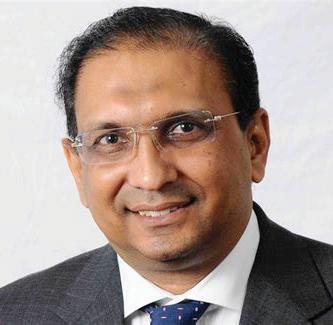
The Kingdom is moving towards encouraging more private sector participation in the healthcare sector. However, the extent of investment required is significant.
commitments due to a variety of reasons, ultimately end up searching for private investors to enter into a licensing and operating agreement, from which they will extract a management fee. Alternative options include operators forming and owning the operating company (OpCo) with the investor investing in the land and property (PropCo), creating a Joint Venture (JV) with an investor. The various options available to operators based on availability of funds are:
• Outright purchase of the land
• Long-term lease of the land
• Land as equity investment by the landlord
• Long-term lease of the land and shell & core structure from landlord/investor
• Creating a JV with the landlord/investor in equity partnership
• Signing a management agreement with the landlord/developer/investor
However, each of these options have financial, operational and legal advantages and disadvantages and operators should seek professional advice before entering into any such arrangement.
Although healthcare developments are traditionally considered a social
In the last few years, sale and leaseback has gained popularity as an option for a number of existing operators who own their facilities but want to expand their operations by creating PropCo and OpCo structure, extracting value by selling and leasing back the real estate asset into a PropCo.
The PropCo or asset would then typically be sold to mainly institutional investors with the property subject to a typical 25-year lease agreement. However, due to the large ticket size of the investment, typically a minimum of US$50 – 70 million for a 100-bed hospital, only institutional investors or large family houses have access to these funds with retail investors not able to benefit from the opportunities.
In Colliers’ opinion, one way of bridging the required investment is by way of creating more REIT funds. Based on Colliers estimates, REIT funds in the Kingdom can unlock around US$59.0 - 63.4 billion property value from the private sector,

“One way of bridging the required investment is by way of creating more REIT funds”
Mansoor Ahmed, Executive Director MENA Region at Colliers
thereby playing a key role in augmenting growth in the healthcare sector.
Unlocking the real estate assets through capital markets, REIT funds or sales and leaseback in the Kingdom can potentially release US$59.0 to 63.4 billion from property values in comparison to the required investment of approximately US$33.8 to 35.6 billion. This will allow for the development of an additional 19,000 to 20,000 beds by 2030 within both public and private sectors, while the remaining funds worth US$25.2 - 27.8 billion can be used to upgrade the existing hospitals.
Furthermore, the unitisation of the physical assets also increases the size of the potential investor base.
The expansion of REITs in KSA is expected to benefit the Kingdom’s economy and capital markets by o ering investors more diversification, transparency and greater accessibility to local real estate.
Moreover, it is expected to provide an opportunity to retail investors who are looking for predictable income streams from real estate assets. The unitisaton of the physical assets also increases the size of the potential investor base attracting new sources of capital.
In summary, the healthcare sector in KSA, especially the private healthcare sector, o ers several lucrative opportunities for developers, investors and operators. However, it also possesses a number of challenges, such as high capital cost, di iculties in attracting quality doctors and nurses in particular, and funding constraints for new entrants.


Private sector and capital markets/REITs can continue to play a significant role in the growth of the healthcare market by providing much needed capital investment
to fund the required new hospitals by 2030.
Unlocking real estate assets through capital markets/REIT funds or through sales and leaseback in the Kingdom can potentially unlock US$59.0 to 63.4 billion from property values against the required investment of approximately US$33.8 - 36.5 billion to establish around an additional 19,000 - 20,000 beds by 2030 within both public and private sectors. This would provide an unutilised US$25.2 - 27.8 billion which can be used to upgrade the existing hospitals.
Colliers is working with a number of market players to assist them in their expansion plans either by the expansion of existing brands or attracting international brands to the region. Colliers is also assisting a number of market participants through traditional funding options, such as debt and equity or emerging funding options, such as OpCo/PropCo or a Joint Venture (JV) with an investor and REITs.
 mansoor.ahmed@colliers.com
mansoor.ahmed@colliers.com
“The healthcare sector in KSA, especially the private healthcare sector, offers several lucrative opportunities for developers, investors and operators”
Imad Damrah Managing Director, KSA Colliers
The NHSC offers a single point of access to expertise from the UK National Health Service, says Kevin Miles, Senior Lead, NHS Consortium for Global Health at Health Education England
The UK’s National Health Service (NHS) has provided universal health coverage domestically for over 70 years. The NHS is scaling up its contribution to global health and seeking new health sector alliances through an innovative mechanism, the NHS Consortium for Global Health (NHSC).
The NHSC launched in 2019 as a strategic partner to the UK Foreign, Commonwealth and Development Office’s (FCDO) Better Health Programme, which operated in eight countries in the Indo-Pacific, Latin America and Africa.

The NHSC’s evolving model captures a wide spectrum of the UK health system, including service delivery, health workforce, health information systems, access to essential medicines, financing, and leadership and governance.
The novel aspect of the NHSC is that it offers a single point of access to expertise from the UK’s national health organisations, including eleven of the major NHS executive agencies and public bodies to facilitate dialogue between health systems. This single point of access reduces transaction costs for all
parties, relieving them of the requirement for multiple contracts, liaison points, and funding and reporting streams.
Through a process of co-development and partnership brokering, the NHSC explores requests from partner countries to understand what activities would best achieve the desired outcomes of the various stakeholders involved. For instance, through the NHSC, National Institute for Health and Care Excellence (NICE) has engaged with the Philippine Department of Health through a series of virtual workshops to build national health technology assessment capacity; this has developed into further bilateral collaboration on COVID-19 rapid evidence assessments and on clinical guideline development.
In countries undergoing rapid digital transformation, for instance Brazil, Vietnam, and Indonesia, the NHSC has convened
the likes of NHS Digital and NHS England to exchange knowledge on how senior digital health architecture specialists manage interoperability across a range of digital operating systems and across the myriad of industry providers, or how digital consultation in primary care could radically transform the delivery of healthcare in remote areas.
Kevin Miles Lead,One of the positive legacies of the COVID-19 pandemic is the wider acceptance and use of virtual platforms, which can enable a broader range of collaborators to contribute, while also reducing the reliance on traditional ‘fly-in-fly-out’ models that are expensive and add to the burden of carbon emissions. Challenges associated with COVID-19 responses have also emphasised the need to collaborate across borders and common health challenges, such as the rise in non-communicable diseases. Sharing learning and expertise to tackle these issues will continue to add value for global collaborations.
Ultimately, the NHSC seeks to build institutional health partnerships and networks through peer-to-peer, systemto-system dialogue to catalyse strategic partnerships that seek to strengthen health systems and reduce health inequalities.
The NHSC deploys its functions through a Secretariat that manages the day-to-day functions of the NHSC, including logistical arrangements and financial flows between NHSC member organisations. All activities are aligned with UK and global health objectives and, more importantly, those in the countries with which the NHSC seeks to form partnerships. Additionally, monitoring and evaluation is core to the work of the Secretariat. Ensuring all partners benefit from any collaboration is critical and the NHSC is constantly seeking to ensure that evidence is available to demonstrate this.
The NHSC implementation approach is primarily demand-driven with foreign government ministries as key stakeholders and collaborating partners. NHSC relationships with UK government sector partners also reach beyond health and enable the facilitation of strategic, technical and diplomatic dialogue between senior stakeholders. Key stakeholders include UK government departments, such as the Foreign, Commonwealth & Development Office, Department for International Trade, and Department of Health and Social Care. This multisectoral approach enables the NHSC to coordinate inputs from across the national policy and systems levels of government.
Another unique element of the NHSC is that it constantly looks for opportunities to share global learning through identifying policy gaps and best practices among its network of partner countries. This includes sharing UK health sector expertise to strengthen health systems globally as well as bringing learning around innovative practices from other countries back to the UK.
In its relatively short life, the NHSC has demonstrated its value and continues to learn and evolve and is poised to expand its operational footprint and partnerships for mutually beneficial collaboration.



We are the international experts in health and wellbeing connectivity. We create the tools to give everyone the best chance of optimising their personal health and wellbeing.
We partner with organisations and healthcare providers, creating bespoke digital solutions to help engage their people to transform the quality of their lifestyle.
Our Nexus solutions provide actionable data for organisations, so they can measure engagement and effectiveness. The end result is a tangible reduction in the personal, social, and financial costs associated with disease and ill health.
To find out more about how Nexus can support your business or organisation, please contact Emily Nicholls, Chief Operating Officer on enicholls@nexus-dt.com
Mat Oram CEO and Co-founder of AdviseInc speaks to Healthcare World about finding better value through hospital procurement processes
Healthcare operators can often struggle with issues surrounding product procurement. It’s often difficult for procurement teams to know if they are buying the right products and or paying the right price, turning their work into a financial and logistical nightmare.
With the rapid rise of digital innovation, it’s clear to see the benefit it has brought to all corners of the healthcare ecosystem, including procurement, enabling operators to find value in areas that they did not know existed. Now, the information surrounding procurement can be connected and analysed where before it
would have been far too time-consuming or even impossible.
According to Mat Oram, CEO and Co-founder of AdviseInc, the entire procurement system within healthcare can be revolutionised through improved data analysis. “AdviseInc has been helping healthcare organisations save money throughout the procurement process for years,” he says. “By uilising our Price Benchmarking & Spend Analytics tools, AdviseInc has identified millions of pounds worth of variation in more than 200 NHS trusts across the UK, saving them vast amounts of money simply through the usage of procurement data analysis. It doesn’t matter if an operator’s data is poor, or their systems are not connected, they can still benefit from our analysis.”
If we examine the state of procurement in the UK, every hospital is responsible for buying and o en sourcing its own products. In recent times, there has been a drive to tackle procurement on a national scale, but now two extremes have developed. “Buying locally, you don’t receive the benefit of economies of scale, and buying nationally, suppliers can be too separate from the customer - both geographically and financially - resulting in a massive disconnect,” says Mat.
“To get the best value, procurement teams must first know what they’re buying, know their customer, have some form of leverage through volume, innovation or relationship, and really understand the market for the product that they are sourcing. For smaller organisations, this might not be possible, and for larger organisations, it can be really di icult to understand what exactly everybody needs and wants.”
Nowadays, the formation of ICSs and smaller organisations grouping together in one body is having a profound impact on procurement at large throughout the NHS. By enabling organisations to pool together, smaller organisations can still maintain their independence and benefit from being part of a larger buying organisation. Yet, there are still issues posed by this model.
“There is no universality between these organisations, and the bigger the ICS grows, the more variation you will encounter between systems and data. Then it becomes trickier to figure out the most pressing needs, posing a di erent issue from a procurement perspective, but an equally di icult problem to address,” says Mat.

“Nowadays groups of hospitals are joining forces which means they are having to work together and source products together, which can be challenging - we’re trying to solve the problem for them. One of the challenges to address is how to bring data together from a procurement perspective to allow somebody buying regionally to make the right decision.”
With the development of ICSs in the UK, many organisations have now installed Procurement Directors to manage and
guide the procurement process. But, as this is still a relatively new system, there are questions to be answered around how these procurement directors make their decisions, and the tools they have at their disposal to ensure best practice. In addition, how do they know the specific requirements of each of these 10 or so organisations under their purview, and how they could be sourced?
“The solution, of course, lies in the correct use of data,” says Mat. “It isn’t as if these data systems aren’t in place. Legacy ordering, finance, cataloguing and inventory systems all exist in UK organisations and have been there for a long time, but they have never been brought together into a single view.”
The main sticking point lies in access and process - users are required to log on to many di erent systems, with many di erent credentials and formats, user interfaces and methods of operating, making the entire exercise painful and time-consuming.
“The only way for a Procurement Director at one of these organisations to make sense of these masses of information is to have it all in one place, providing them with opportunities, pricing, benchmarks, and current inventory,” says Mat.
The issue is even more pronounced with systems that have not yet been integrated. At the current time, more and more healthcare systems are rapidly adopting the ICS model, but the risk of implementing this without properly collating, cleansing and normalising the data poses a gargantuan task and continues to leave many in the dark.
“However, with our analytical solutions, this no longer needs to be an issue, even if a company’s procurement data is outdated or not in the best shape. Using our tools, we can identify
key areas to save money without the need for a shiny new data system or months of improvement,” says Mat.
“Part of the beauty of our system is that it will tell you exactly where particular data needs improving, and a lot of the time the data is actually fine for analysis. There’s always value in the data and we can always help find savings.”
Furthermore, the solution that AdviseInc provides can be implemented rapidly, posing no risk to organisations looking to both improve their data and cut a vast amount of cost in the procurement process.
“Once we receive the data and it’s in the right format, we can start our onboarding process internally. Usually, within two weeks an organisation should have access to an application with which they can both see and analyse their data. The quality is then improved, but companies would receive most of the benefit in terms of where they could save money within two or three weeks,” says Mat.
“In our first major project, we onboarded our solution to more than 210 NHS trusts in the UK to deliver price benchmarking across the whole of England, Wales and Northern Ireland. Within 3 months the system was fully operational for 90 per cent of NHS provider trusts,” he continues. “There was a monumental amount of data to tackle from each individual NHS Trust system, but we were able to price benchmark it rapidly.”
With successful proof of concepts completed in the USA, Australia and parts of Europe, AdviseInc is now looking for more countries to benefit from their rapid solution.
“In short, we can handle data that could be old and creaking yet still make it deliverable at scale,” Mat concludes. “Above all, the process is incredibly fast. In our opinion, it’s a no-brainer for organisations who want to improve their procurement process and need to save money as most of our customers see multiple returns on investment quickly.”

“Using our tools, we can identify key areas to save money without the need for a shiny new data system”Contact
Mat Oram CEO AdviseInc
SNOMED CT’s multilingual clinical healthcare terminology enables not only better patient outcomes but also improves global knowledge across the healthcare continuum, discovers HW Editor Sarah Cartledge
Regarded as the most comprehensive, multilingual, clinical healthcare terminology in the world, SNOMED CT continues to be adopted and implemented by an everincreasing number of countries. It gives clinical IT systems a single shared language, which makes exchanging information between systems easier, safer and more accurate. With 43 nations on board and more than 30,000 affiliates across 80+ countries, SNOMED CT has been in use for more than 20 years.
In that time the conversation around it has understandably shifted and matured. Today, as the demands for clinical
information sharing and the ability to extract more meaning from oceans of unstructured health data continue to escalate, the more pressing issue for many is no longer simply “what is SNOMED CT?” but how does SNOMED CT provide value, to what degree, how and to whom?

SNOMED International has made great strides in identifying its many stakeholder groups and determining how SNOMED CT is helping them achieve their respective needs. Those stakeholder groups include Members (countries that pay an annual licence fee for SNOMED CT, making it freely available to all users in their country), collaboration partners (such as professional
organisations), researchers and knowledge producers, implementers, vendors, care providers, patients/citizens, and policymakers.
“SNOMED International has achieved many of the goals in our 2020-2025 corporate strategy, one of which is to extend our value proposition to highlight improvements in patient outcomes and better understand how SNOMED CT benefits all our many stakeholders,” says

“The University of Cambridge Hospitals NHS Foundation Trust in the UK reduced sepsis mortality by 42 per cent, saving 64 lives in 2018 alone”
Don Sweete CEO SNOMED International
“More importantly, however, is that this work aligns closely with our users’ needs and helps them better understand how others have reaped tangible benefits from implementing the clinical terminology.”
SNOMED CT is used in a wide variety of settings for a variety of different purposes, including research, data entry and integration, and clinical information sharing, as well as in management, population and point-of-care analytics. For success, it must be embedded within an electronic health records/clinical information system, a health data and analytics platform, or an interoperability solution, for maximum utility and effectiveness (see July Healthcare World article; (The Global Language of Healthcare).
SNOMED’s recent report on the Case for Investment in SNOMED CT includes case studies conducted in large hospitals and health systems, as well as in research
organisations, in the US, Canada, the UK, Australia and China. The report examined from the perspective of different stakeholder groups how SNOMED CT helps each of these groups realise the value of the terminology.
For patients, whose well-being is at the heart of everything SNOMED International pursues, the benefits are tangible. They are empowered with the ability to take control over their own health information and be more knowledgeable about their health and care options. SNOMED CT is one of many contributing factors to improving those patient outcomes and has seen demonstrable patient impacts in areas such as COVID-19, patient safety, and infection control.
“Although there are direct and demonstrable benefits for patients, all benefits, whether to clinicians, researchers, vendors or others, ultimately contribute to better care and improved patient outcomes,” explains Don Sweete.
For Members, the benefits are clear. In addition to the advantages of being part of a large, highly active global community of practice characterised by an eagerness to learn and share knowledge with other users, a Member country’s SNOMED CT implementation ensures that high-quality clinical information is available to all of that country’s stakeholders as well.
For care providers, such as family doctors, specialists, nurses and other clinicians, SNOMED CT promises – and delivers – data portability, enabling them to collect and use detailed clinical data, share clinical data and documents with colleagues, and use advanced point-of-care analytics. The North York Hospital in Toronto, Canada, saved more than CAD$31 million over a six-year period by eliminating errors through proper medication reconciliation, while the University of Cambridge Hospitals NHS Foundation Trust in the UK reduced sepsis mortality by 42 per cent, saving 64 lives in 2018 alone.
International standards in relationships and research
The collaborative relationships and agreements established with many leading global medical, physician, nursing, dental, genomics and research associations, professional associations and standards organisations have enabled the integration of SNOMED CT with 10 globally adopted standards. These include five different ICD classification schemes, the Global
Medical Device Nomenclature, LOINC, ICNP (International Classification for Nursing Practice), Orphanet (rare diseases), and MedDRA (regulatory information for medical products). Each of these integrations leads one step closer to truly establishing “one language of global health.”
Researchers and knowledge producers who use SNOMED CT either as part of a Member country or via an affiliate license have the ability to support a wide range of analytics and research activities to support decision-making at various levels of healthcare administration, management and delivery. OHDSI, an international network of researchers and observational health databases, developed and used its SNOMED CT-embedded OMOP Common Data Model (CDM) for its data platform as a global standard for patient and population observational research.
Similarly, implementers benefit by the ease of collecting data once and reusing it for a range of purposes. Australia’s Northern Queensland Primary Health Network and the Mackay Hospital and Health Service deployed a SNOMED CTembedded tool called HealthPathways, an evidence-based clinical pathway designed to improve GP confidence in managing complex conditions, improve referral appropriateness, and reduce unnecessary care. As a result, the organisation saw fewer diabetes and cardiology referrals from both primary care and specialist referral sources, and a significant increase in the percentage of appropriate referrals for diabetes.
Vendors who develop and sell clinical information systems with SNOMED CT integrated into those systems benefit from using a global standard deployed in more than 80 countries, often opening the door to new markets.
“We will continue with initiatives that help us define the value of SNOMED CT to different stakeholders and enable us to better understand our community of practice,” Don concludes. “That intelligence, combined with organisational agility and an unwavering commitment to collaboration, position us well to meet future demands.”

line-up of







Vision

experience from across





the



































most exciting





























Supporting international health care providers to deliver best in class primary and step down care
Providing partnership opportunities for investors looking at building international and UK based portfolios




The ICB, the ACO, The Cluster, Outcome-Based Healthcare, Integrated Care, Value-Based Healthcare there are a huge variety of names and acronyms but essentially these all have the same basics concept at their heart.



But what are these things and why do they matter?
To understand the answer we should look, as we always do, at where the money goes and at the way in which healthcare is traditionally delivered against how it might be better delivered in the future.
The traditional model of healthcare delivery has always been top down and its basic mantra hasn’t changed - we are here to heal the sick.
But what if we could stop them from getting sick in the first place?
And what about differentiating between those that are sick and those that are REALLY sick?
If you start with the village healer and traditional medicines and remedies, the first revolution in healthcare starts with the idea of a hospital. A big building where we set bones, remove dysfunctional body parts and care for the most severely ill.
Of course, as healthcare evolved so did the settings in which it was delivered. That has meant the diversification of outpatient clinics, GP surgeries, care-homes for the elderly and facilities for the delivery of care for mental illness.
Out of hospital care has developed massively in the last 100 years as we realised that the answer to overcrowded hospitals meant a change was needed to the setting in which healthcare is delivered. Now the development of digital technologies and their integration into our healthcare systems promises to do the same again.
Digital health, remote monitoring, app based and remote consultations, and the ability to manage a long term health condition without the need to visit a physical healthcare facility, along with the changing needs created by a global pandemic, are already revolutionising healthcare delivery.
We are also moving towards a place where the use of population health data allows us to think more and more about prevention rather than cure. Using medical records along with demographic and lifestyle information from our population to map out our future healthcare needs and issues and be prepared for them in advance.
The hospital may no longer be the centre of healthcare; it is simply a part of the ecosystem which includes specialist centres, clinics and even the living room.
The organisation of healthcare then needs to follow this evolution.
Funding, whether in insurance-based or government-led settings has traditionally been ‘top down’ and largely flowed through the big hospitals.
Steve Gardner CEO


But where is the incentive for an institution for which success is defined by the number of patients who arrive ill and leave well to stop patients from coming to them in the first place?
Control of the funding of the healthcare system of the future must sit independent of the vested interests of the individual elements of the eco-system. Outside of hospitals, GP’s, social care or even local or national government.
It must be sufficiently localised so that it serves the needs of its population. It has to be sufficiently independent and flexible so that it can divert funding to the areas of greatest need, serving primary care, acute care, social care and mental health to the best of its abilities. Crucially this must integrate that care across the system, using data and digital as tools to cross the boundaries between the segments of the system and stopping them working in silos. And doing all of this in a way which prioritises and measures outcomes for a population and seeks to provide value for the money spent.
This is the role of an Accountable Care Organisation, and Integrated Care Board in the UK, a Regional Health Cluster in Saudi Arabia.
They have many names, but they are the future of healthcare delivery globally. They are the way in which we will deliver effective value and outcome-based healthcare long into the future.
‘Integrated, Accountable, Value and OutcomeBased Care, by any other name would smell as sweet’

 Vincent Buscemi
Vincent Buscemi
Partner and Head of Independent Health vincent.buscemi@bevanbrittan.com
 Letitia Winterflood-Blood
Letitia Winterflood-Blood
Senior Associate letitia.winterflood-blood@bevanbrittan.com
 Jodie Sinclair
Jodie Sinclair
Senior Partner Employment, Immigration and Pensions jodie.sinclair@bevanbrittan.com


Bevan Brittan is the market-leader in the provision of legal, governance and regulatory advisory services to businesses delivering and providing healthcare services within the UK and internationally.



Our award-winning healthcare teams provide organisations with outstanding corporate, commercial, clinical negligence, litigation, regulatory, property and employment legal advice.


With years of experience and global exposure, Bevan Brittan’s healthcare teams have the expertise to support client’s endeavours anywhere in the world. Our reputation as a leading healthcare firm has taken us across the globe, working with a wide range of clients (from NHS bodies to independent health and social care providers, operators and developers as well as funders and investors) on a multitude of commercial health projects. Our in-depth practical and commercial knowledge of the challenges and opportunities of expanding overseas are second-to-none and a true benefit to our clients in the increasingly global healthcare market.

Transformation in the healthcare sector represents more than just technical advancement – it represents an opportunity to deliver progress for patients. This drives us forward.

We’re focused on opportunities to use data and technology to:
• help services recover from the effects of the COVID-19 pandemic
• reduce pressure and deliver benefits for the workforce
• improve population health, so people enjoy longer, healthier lives
To get started email